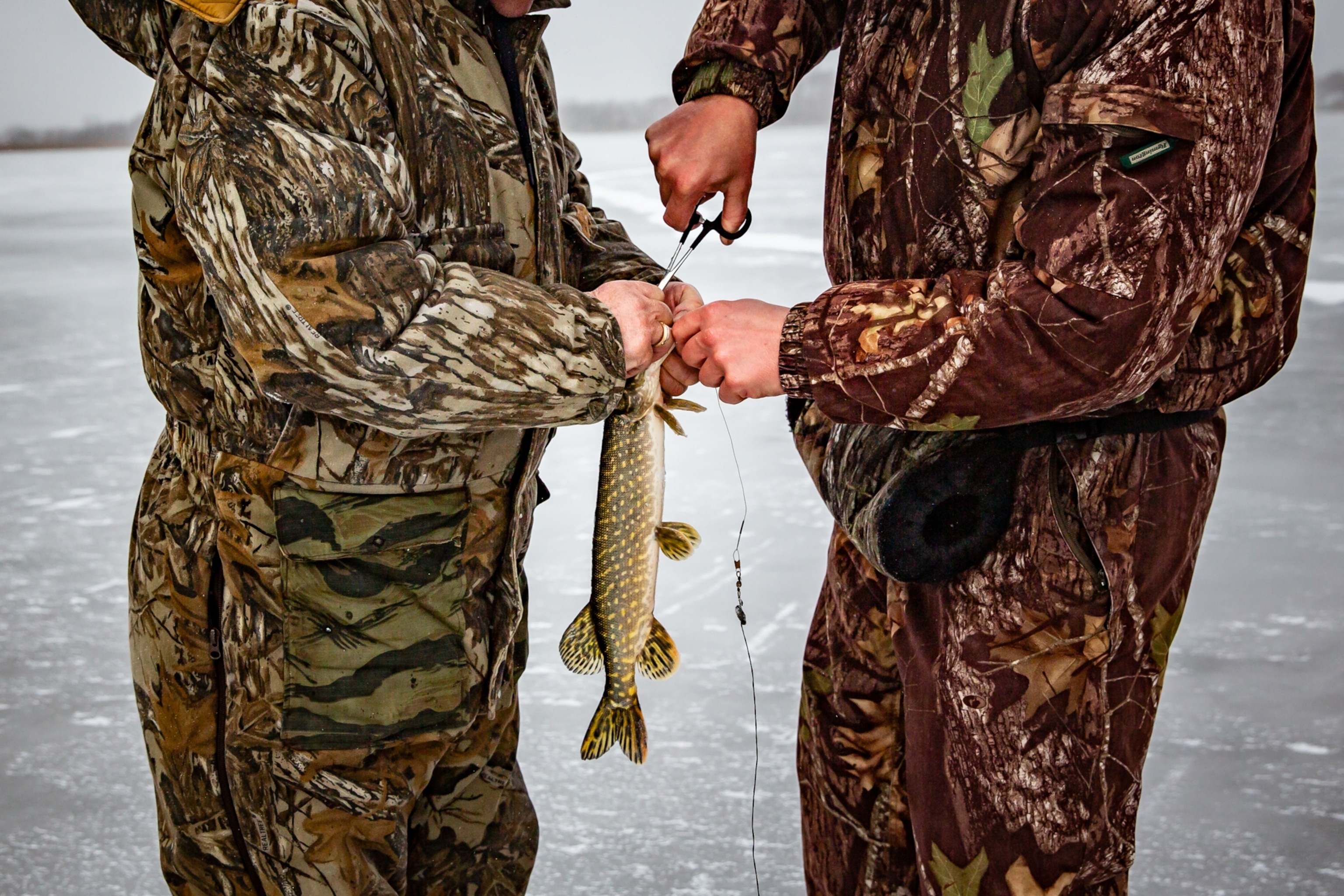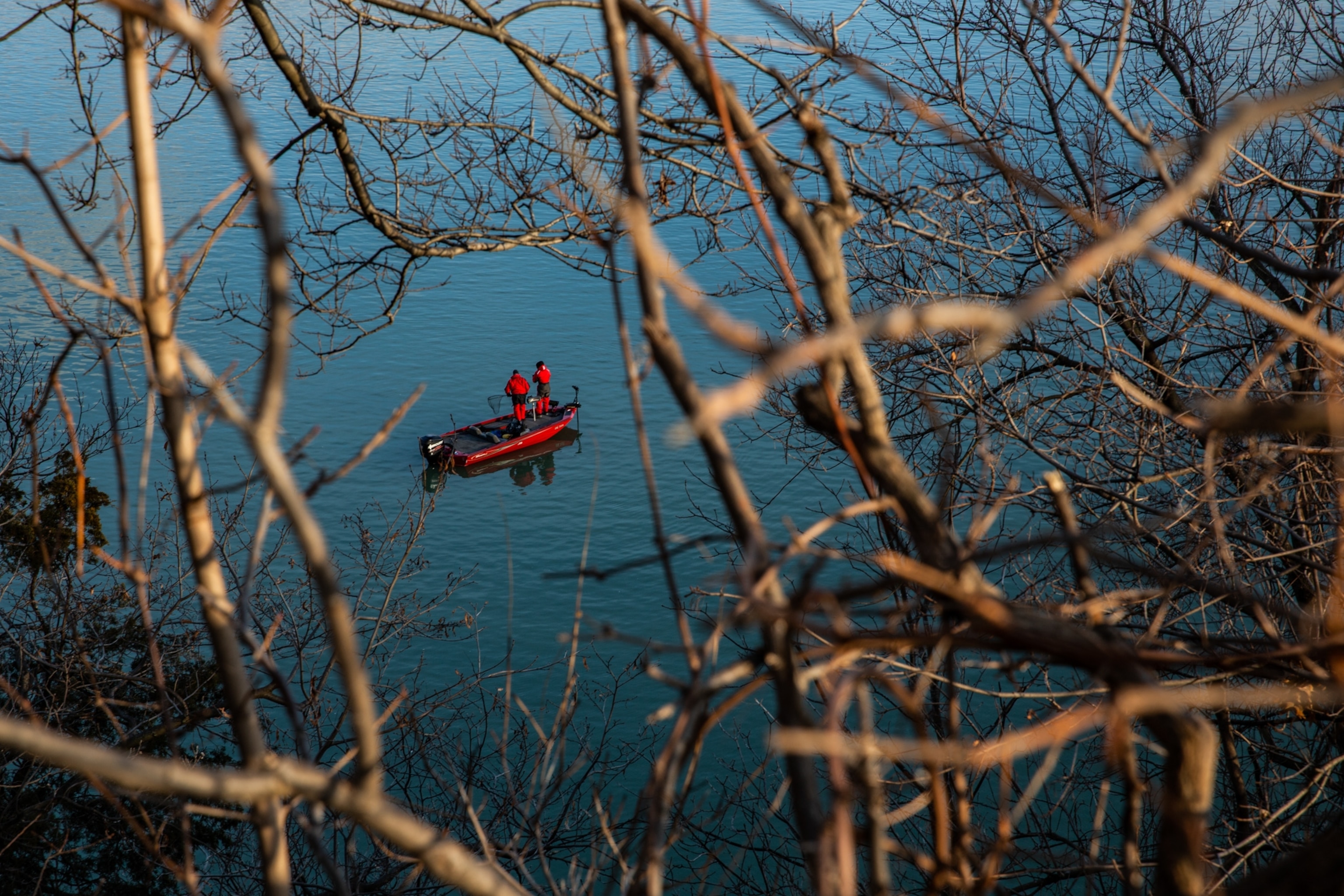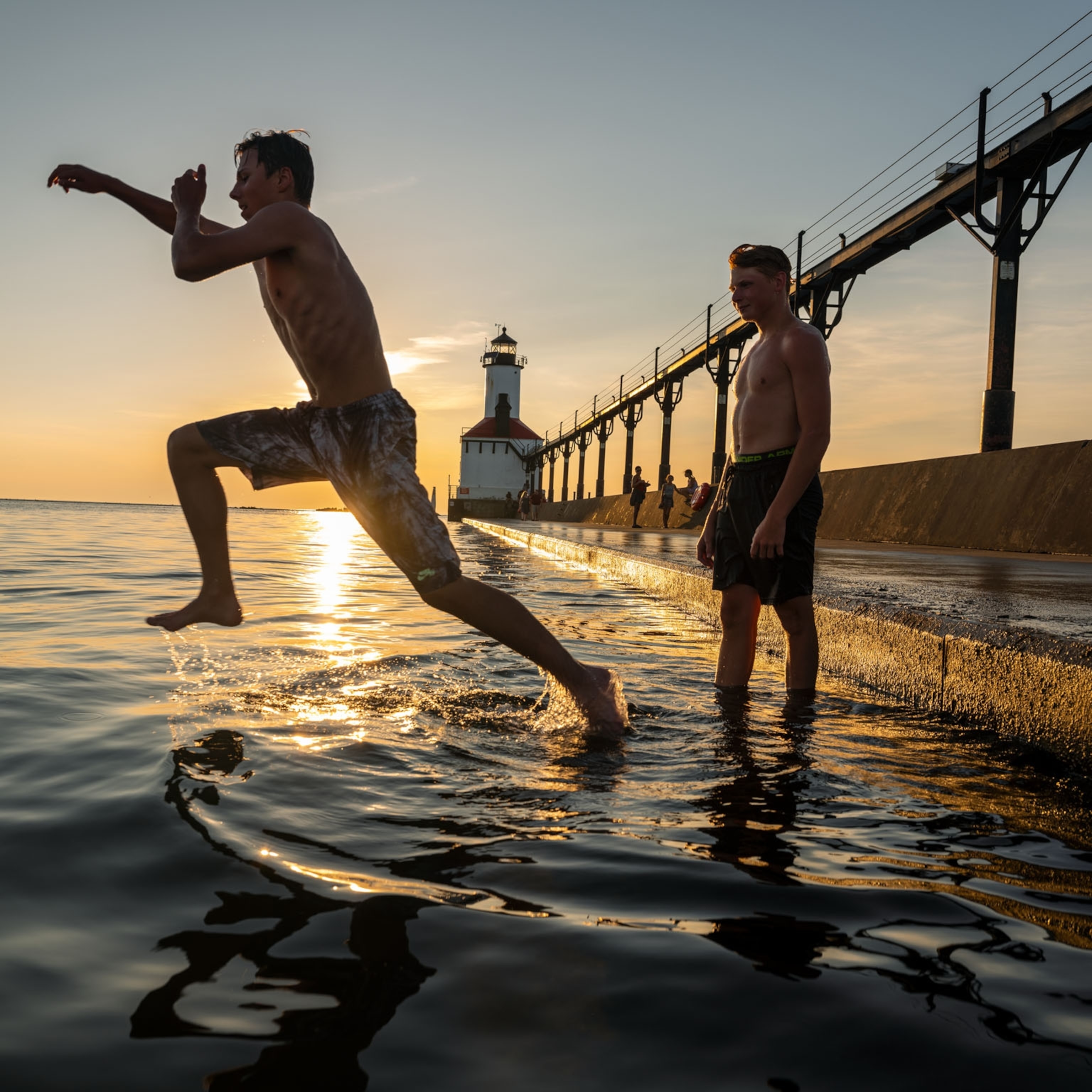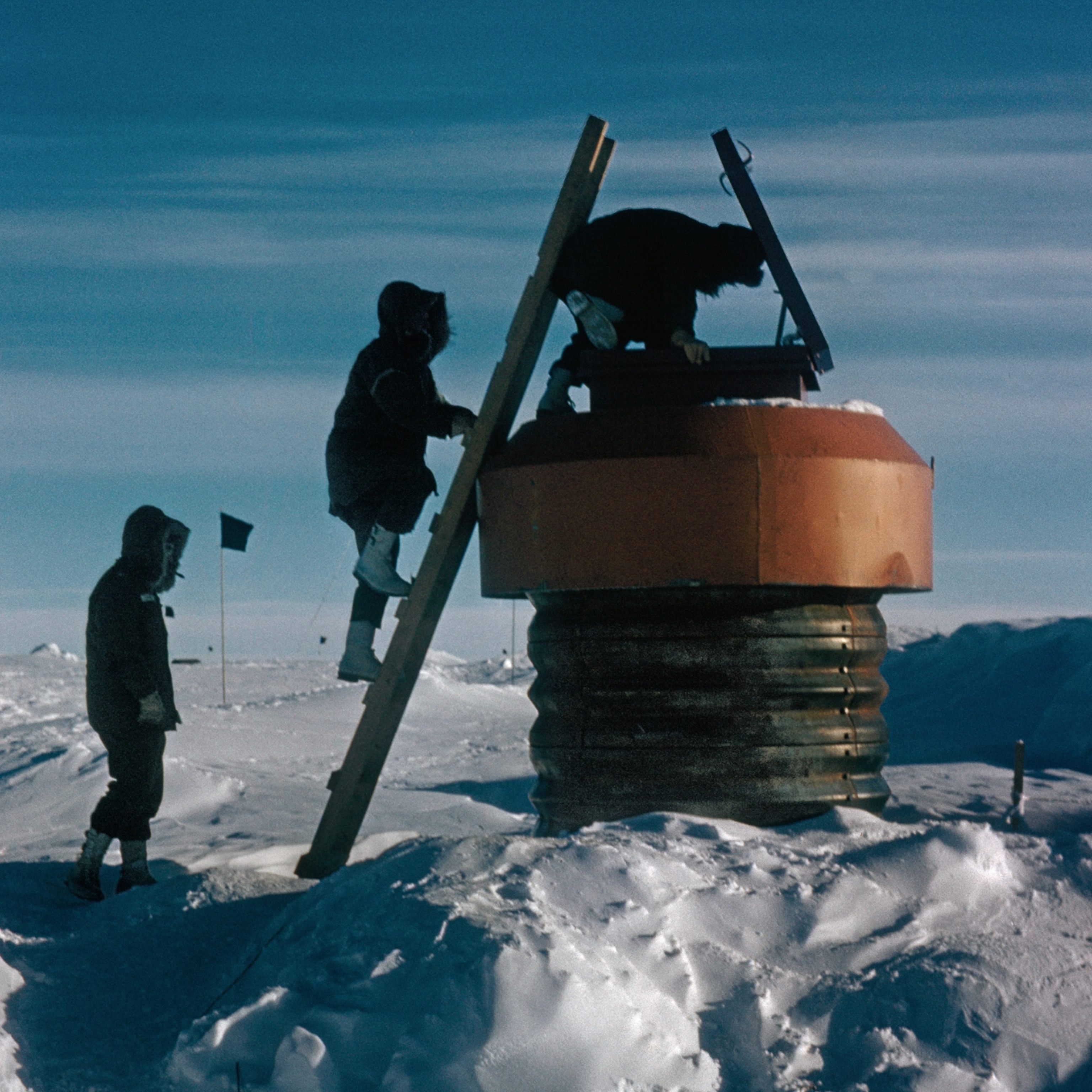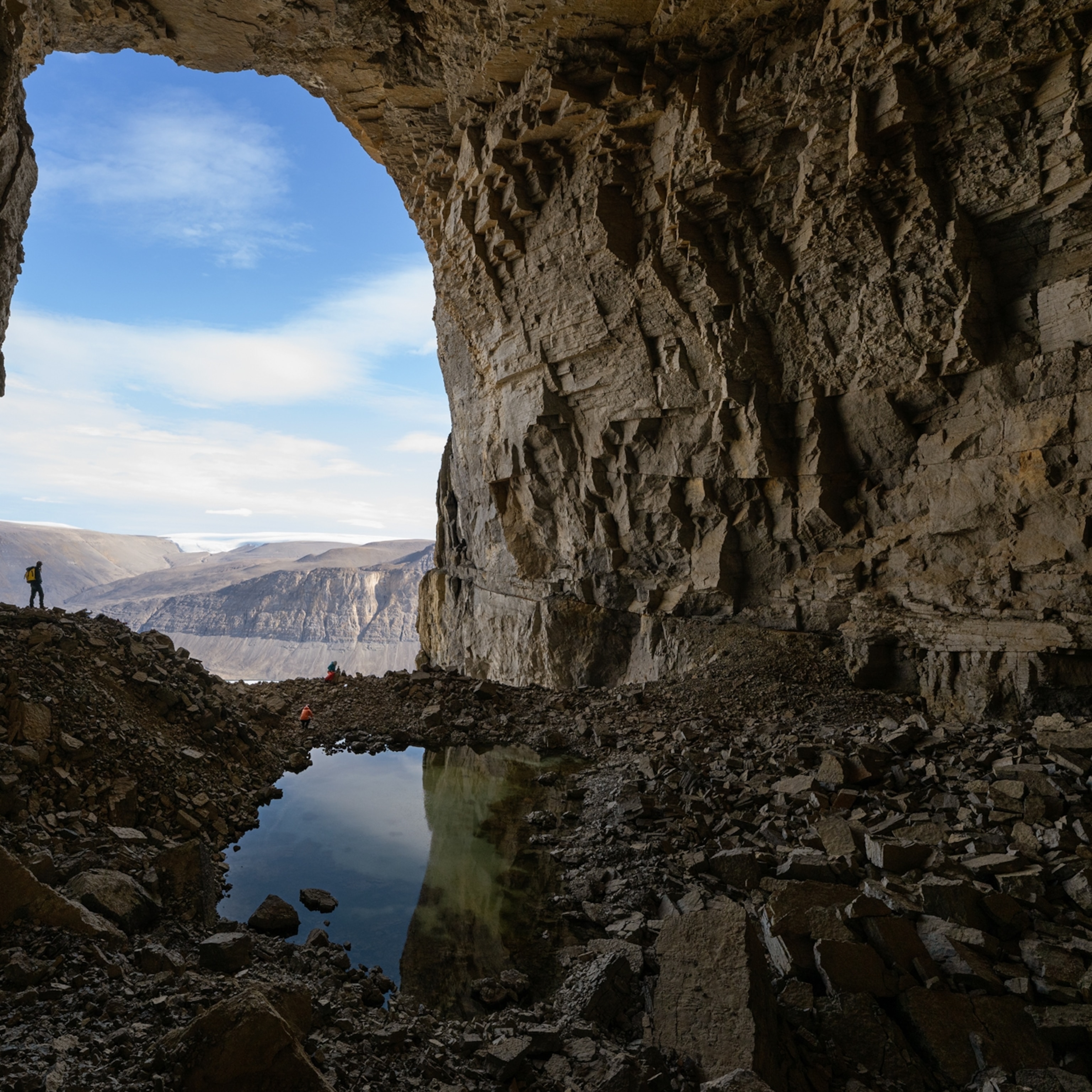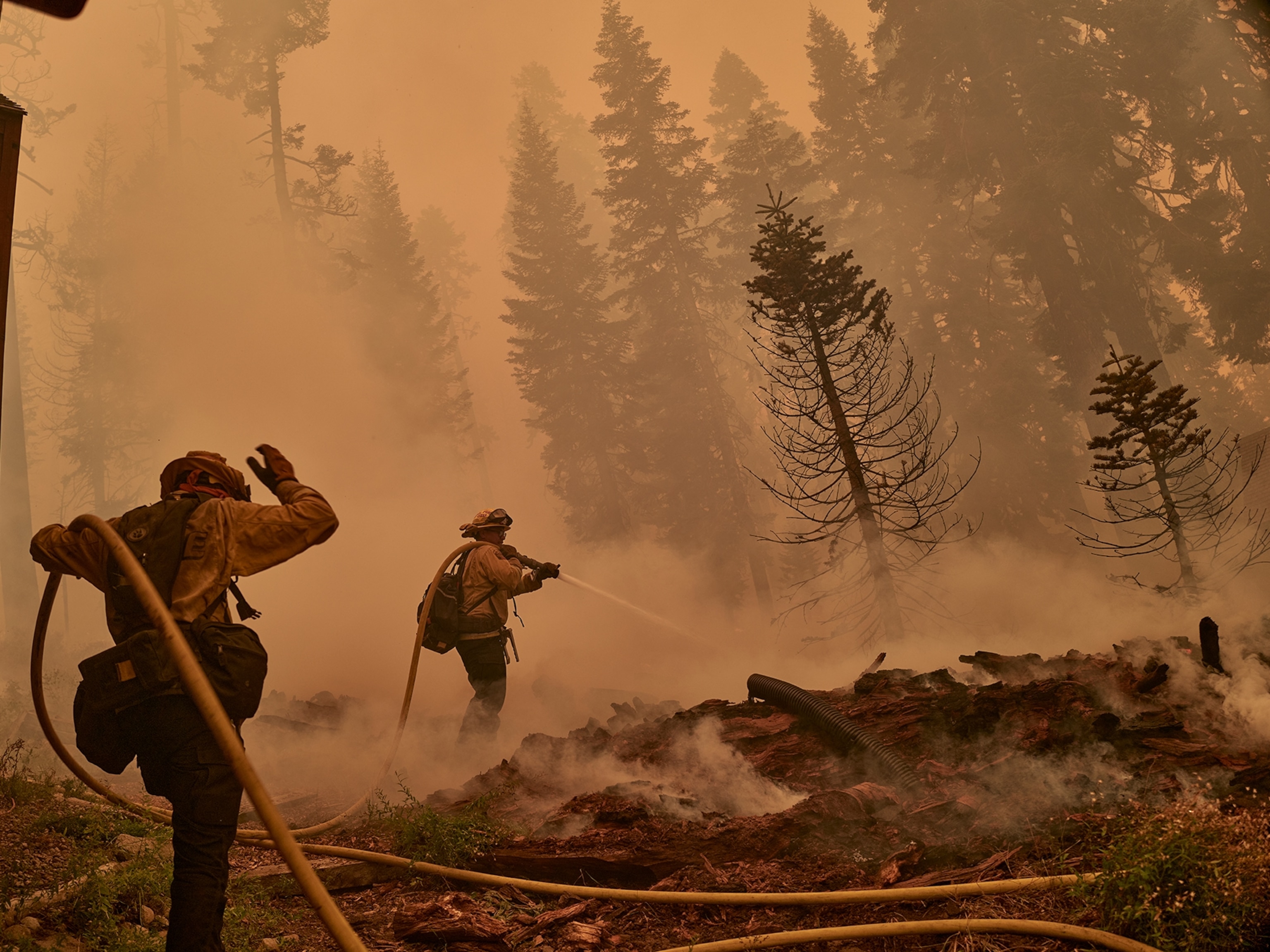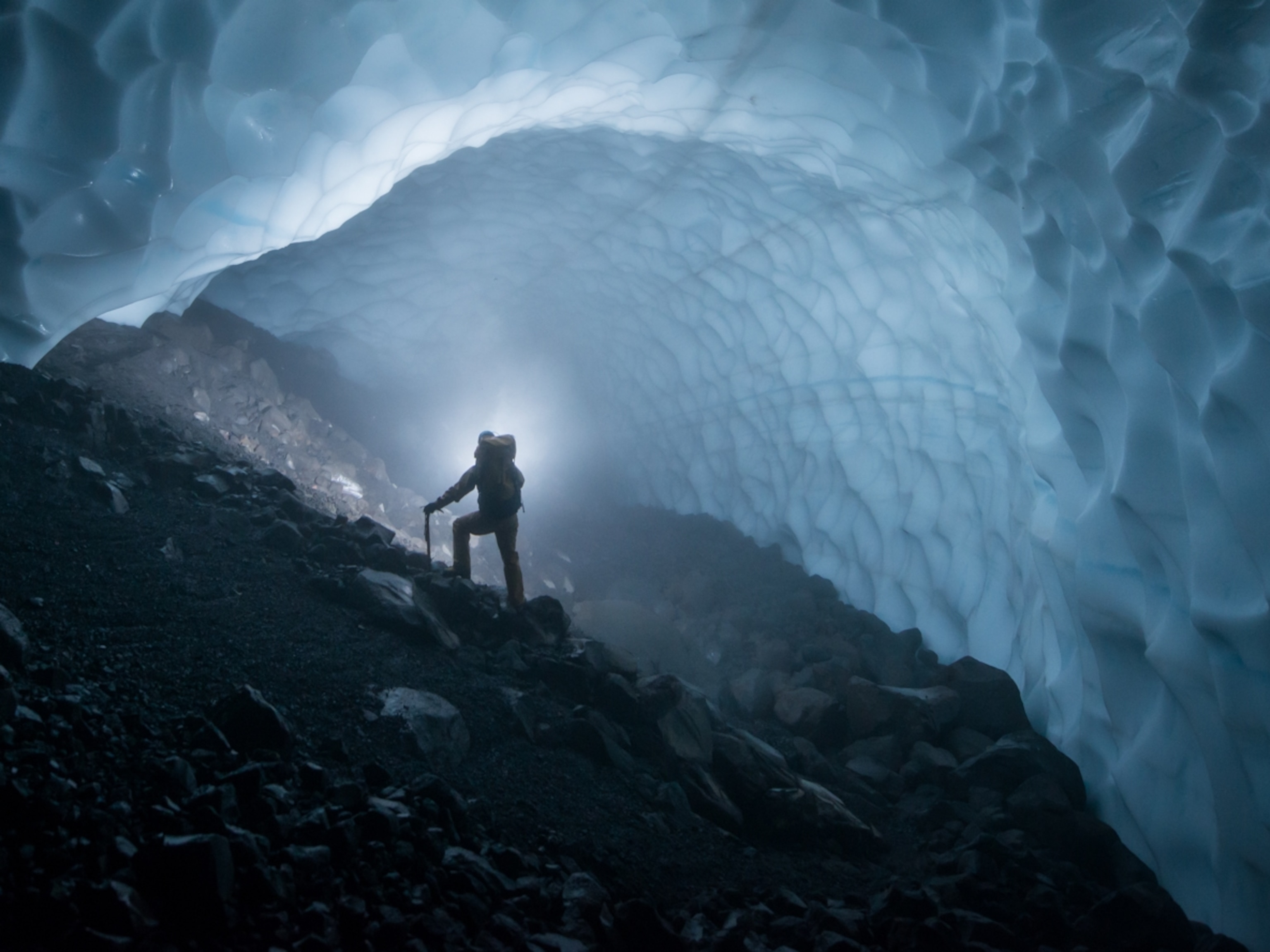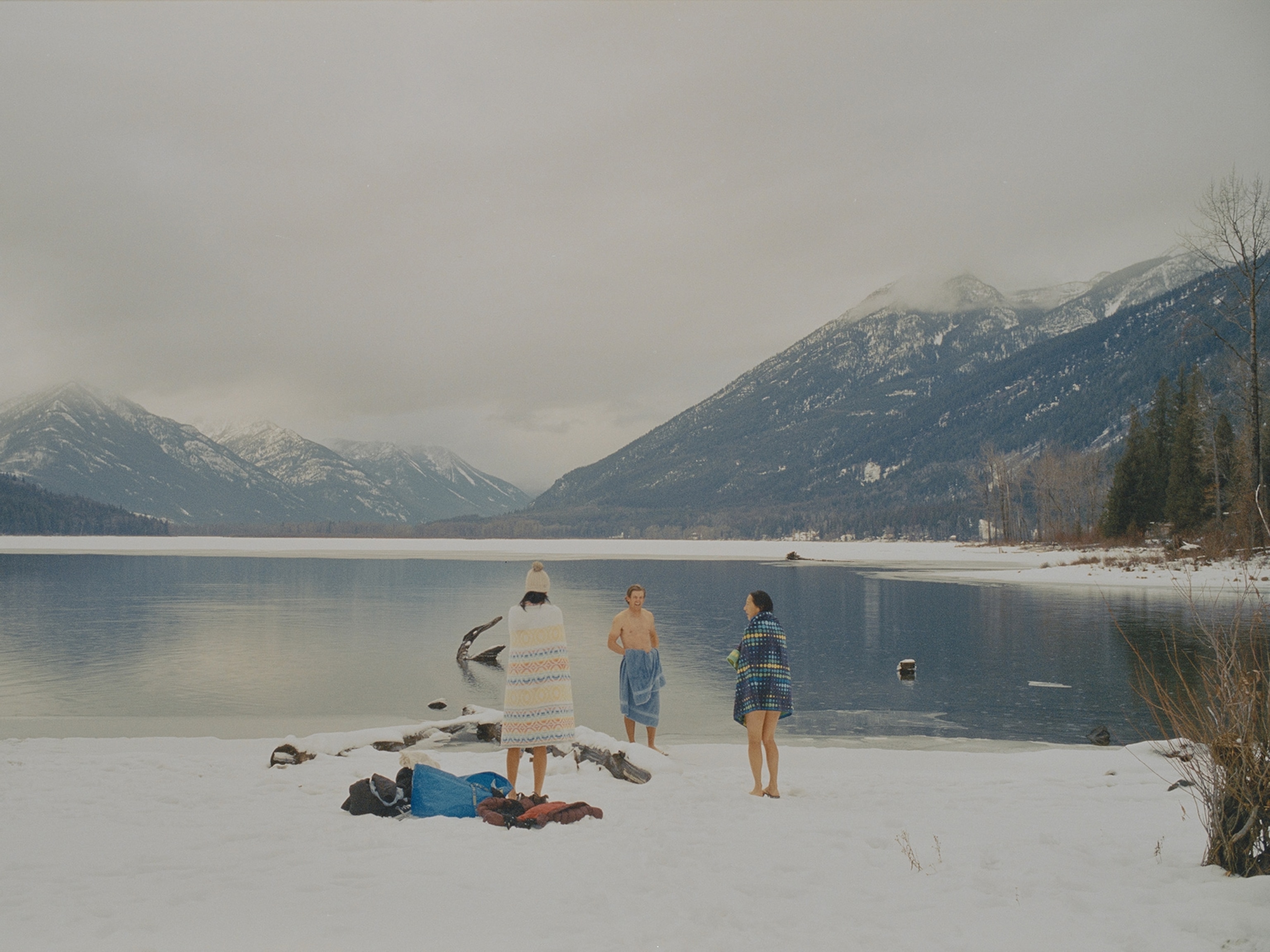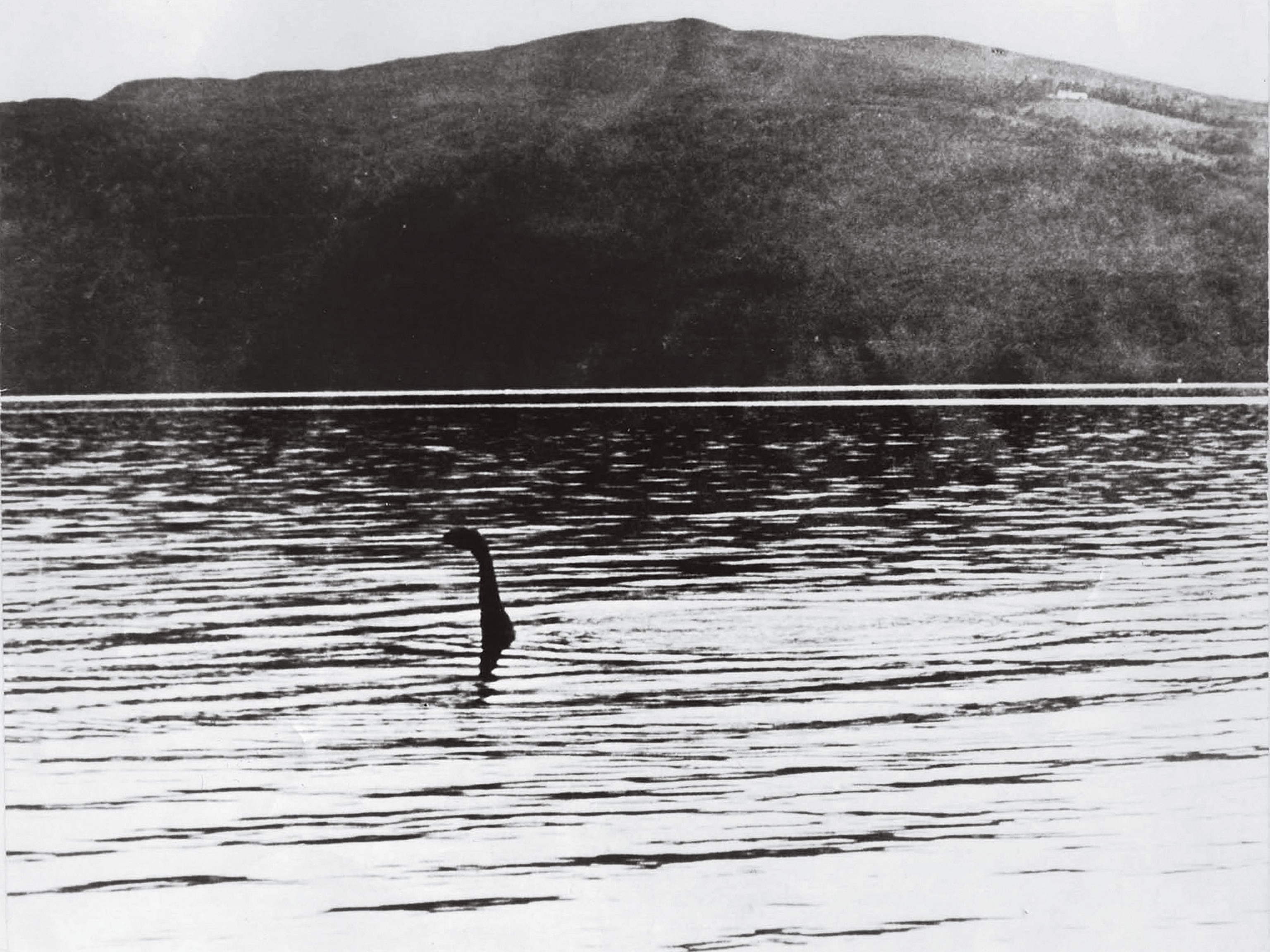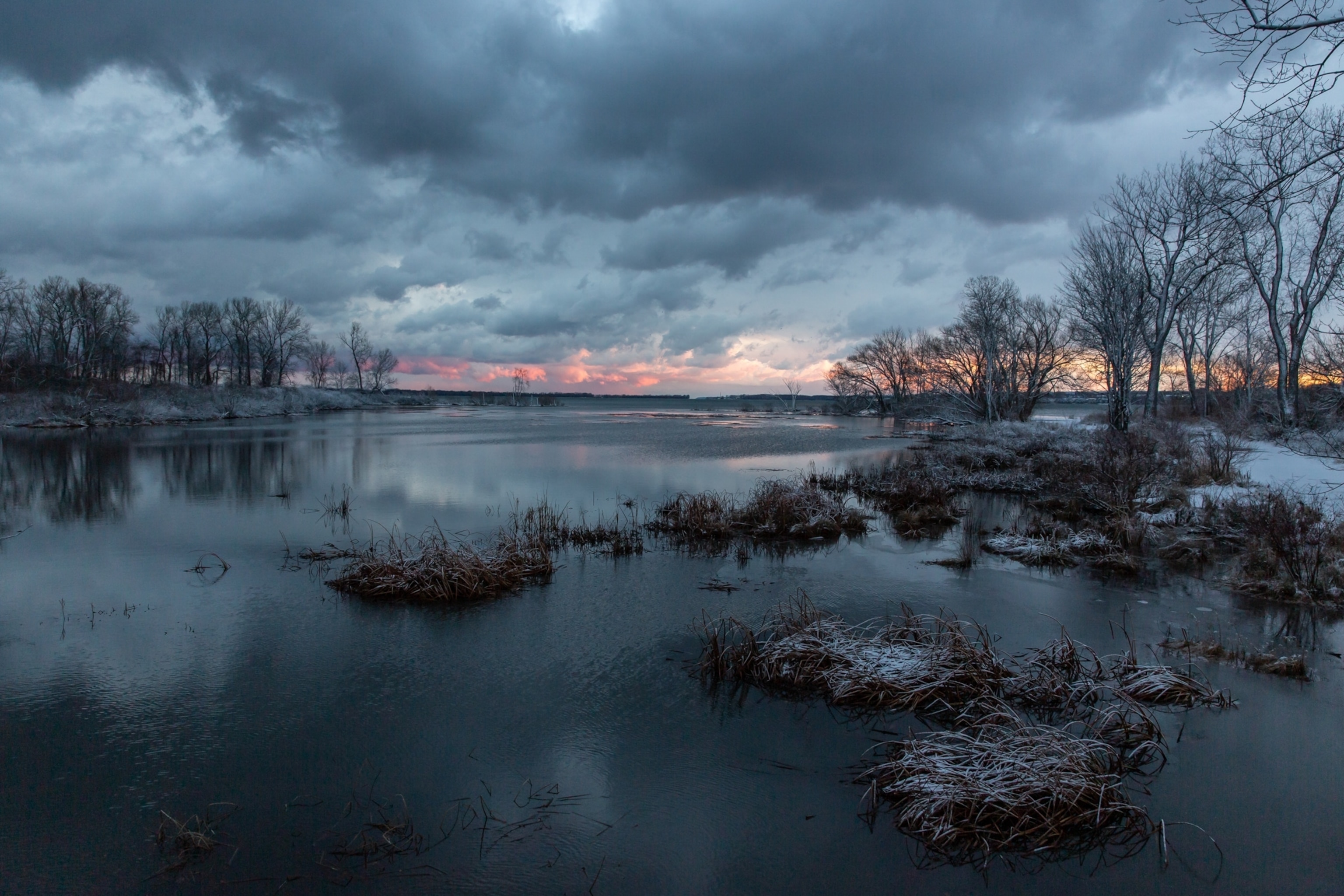
The Great Lakes depend on ice. Last winter, they barely froze.
The region comes alive during winter. But both culture and the economy suffer when the cold doesn’t come.
It’s still dark and well below freezing when Kristie Leavitt pulls to a stop and turns off the ATV’s rumbling motor. For a moment, there’s no sound but the faint whisper of wind sweeping over the ice. The navy blue sky begins to lighten. The cold air burns in her lungs.

Bundled in a hot-pink coat that matches her fishing hut and gear, Leavitt hops down from the driver’s seat onto the 18-inch-thick ice that covers this corner of Munuscong Lake, on Michigan’s Upper Peninsula. Her boots crunch into a thin layer of snow as she begins the ritual of preparing for one of her favorite activities: ice fishing.
Leavitt is among the nearly two million ice anglers in the United States who look forward all year to the chill of winter. Like many others in the Great Lakes region, she also relies on the cold for a living. She helps manage her family’s tourist cabins and bait shop on the edge of the lake, and the businesses make most of their money during the ice fishing and snowmobiling season.
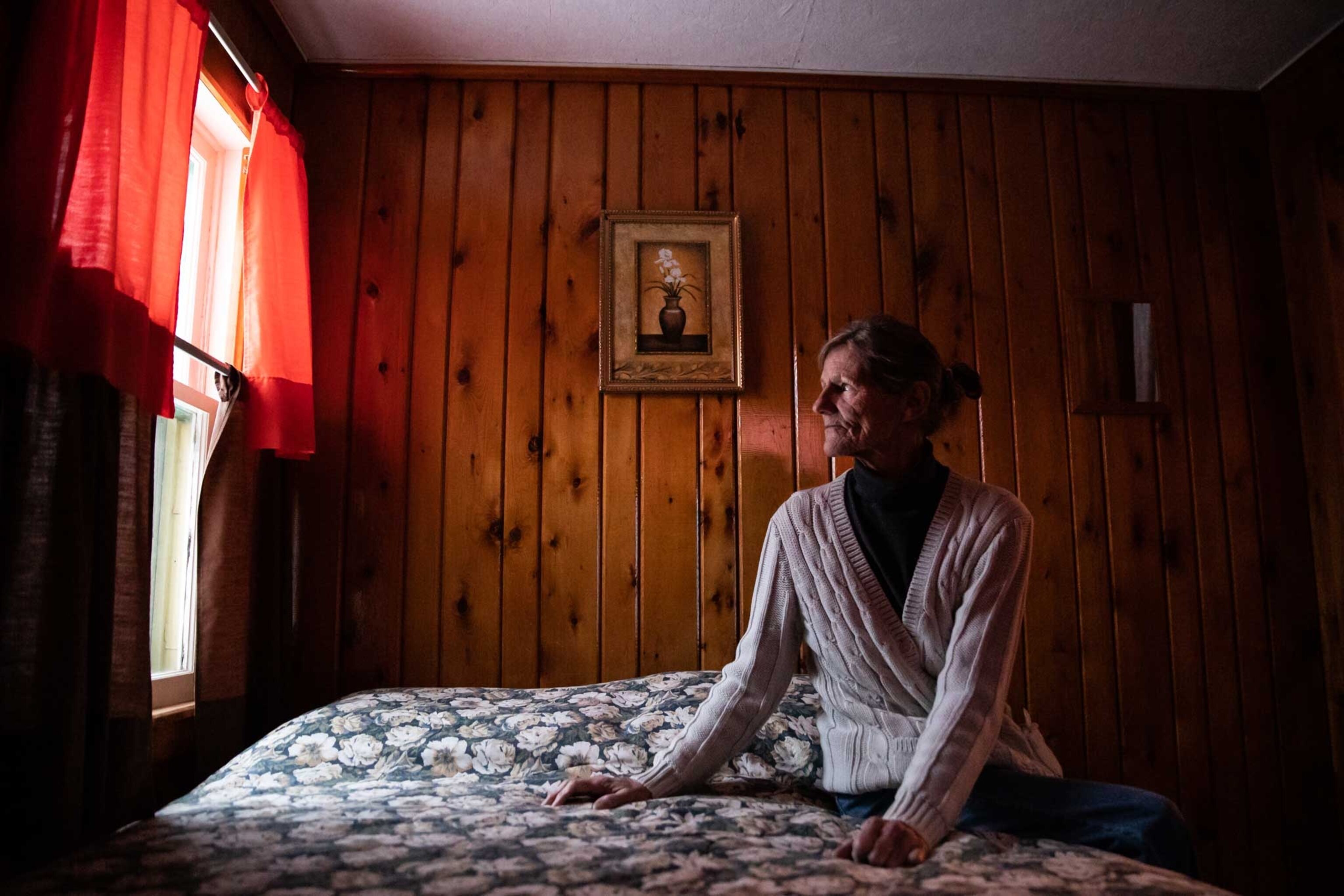
But what Leavitt was doing that February day was a rare occurrence last winter across the Great Lakes. The long-term average for ice coverage on all five lakes—Superior, Michigan, Erie, Huron, and Ontario—is 54 percent. Last winter, ice covered only 19.5 percent of the lakes’ surfaces—a near-record low.
Some lakes in the region didn’t freeze at all. Others saw only faint traces of ice around their edges, or froze briefly. The weekend before Leavitt’s outing, temperatures in the region shot up to 40 degrees Fahrenheit, and ice anglers slogged through slush in T-shirts.
One overly warm season isn’t necessarily a harbinger of the inevitable. But increasingly, scientists can pick out patterns in the scattershot records of change from across the Great Lakes, and those patterns are pointing toward a sobering conclusion: The 2019-2020 winter, with its faint traces of ice, is likely just a taste of the future.
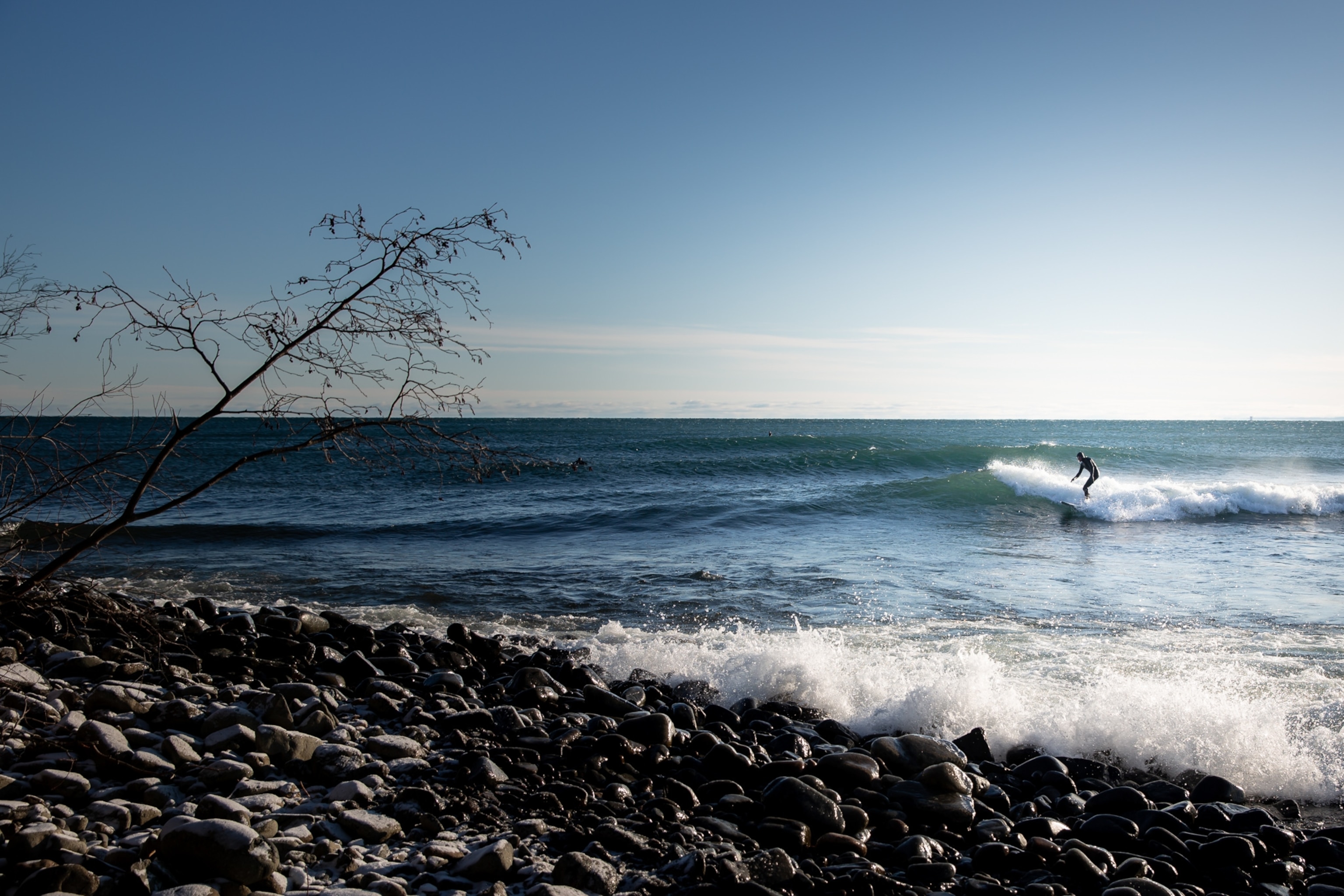
(Read about how the changing climate is unraveling other ecosystems too.)
A history defined by the climate
The Great Lakes account for about 20 percent of the freshwater on Earth’s surface. For perspective: That amount could cover the entire contiguous United States in nearly 10 feet of water.
The lakes’ geographical footprint is also hard to fathom. Their combined surfaces span more than 94,000 square miles, about the size of the United Kingdom. The combined measurement of the coasts of the five lakes is thousands of miles longer than either the Pacific or Atlantic coastline of the contiguous U.S.
The presence of all that water was shaped by natural changes in Earth’s climate through time. But the lakes now face unprecedented change—and this time, humans are behind it.
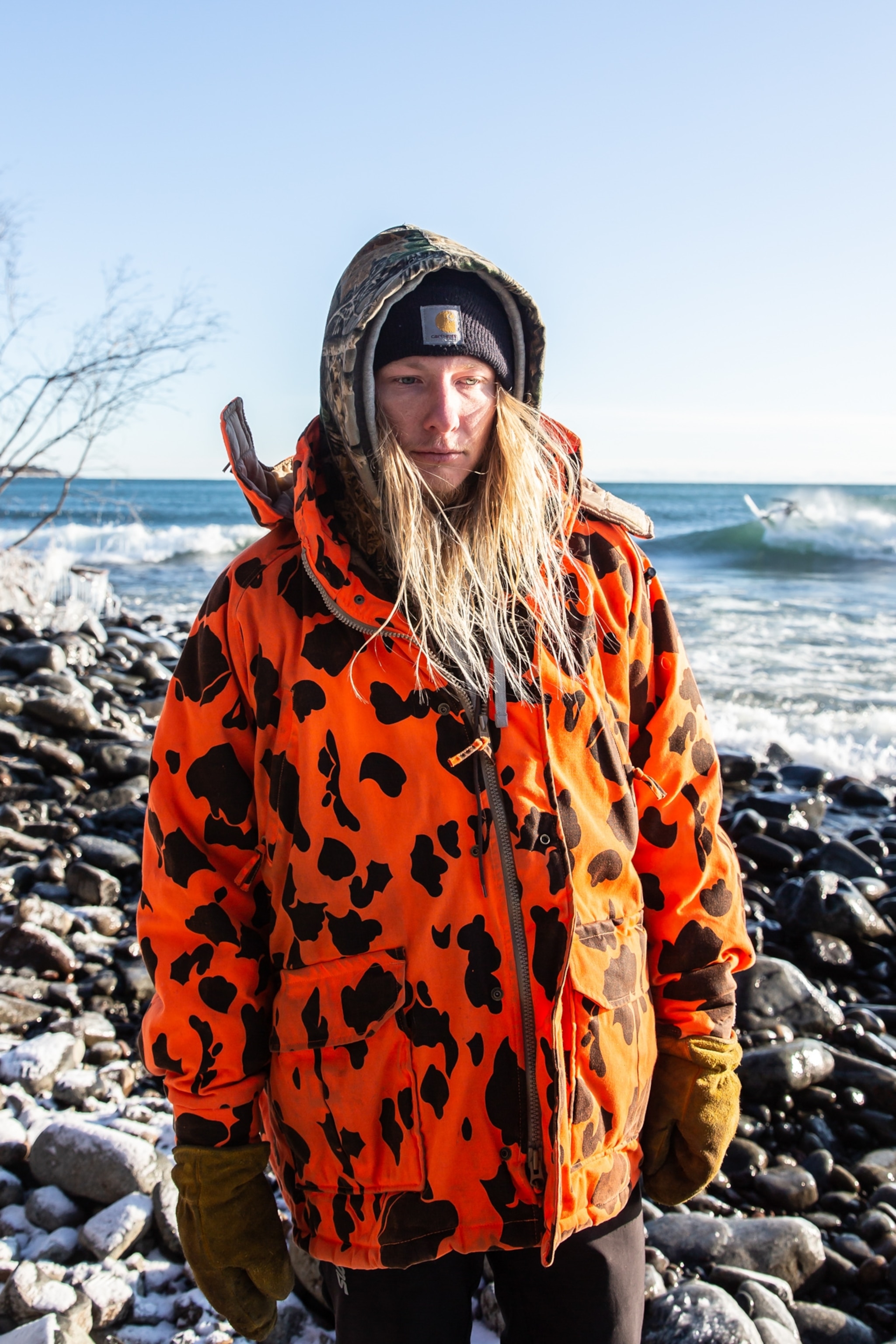
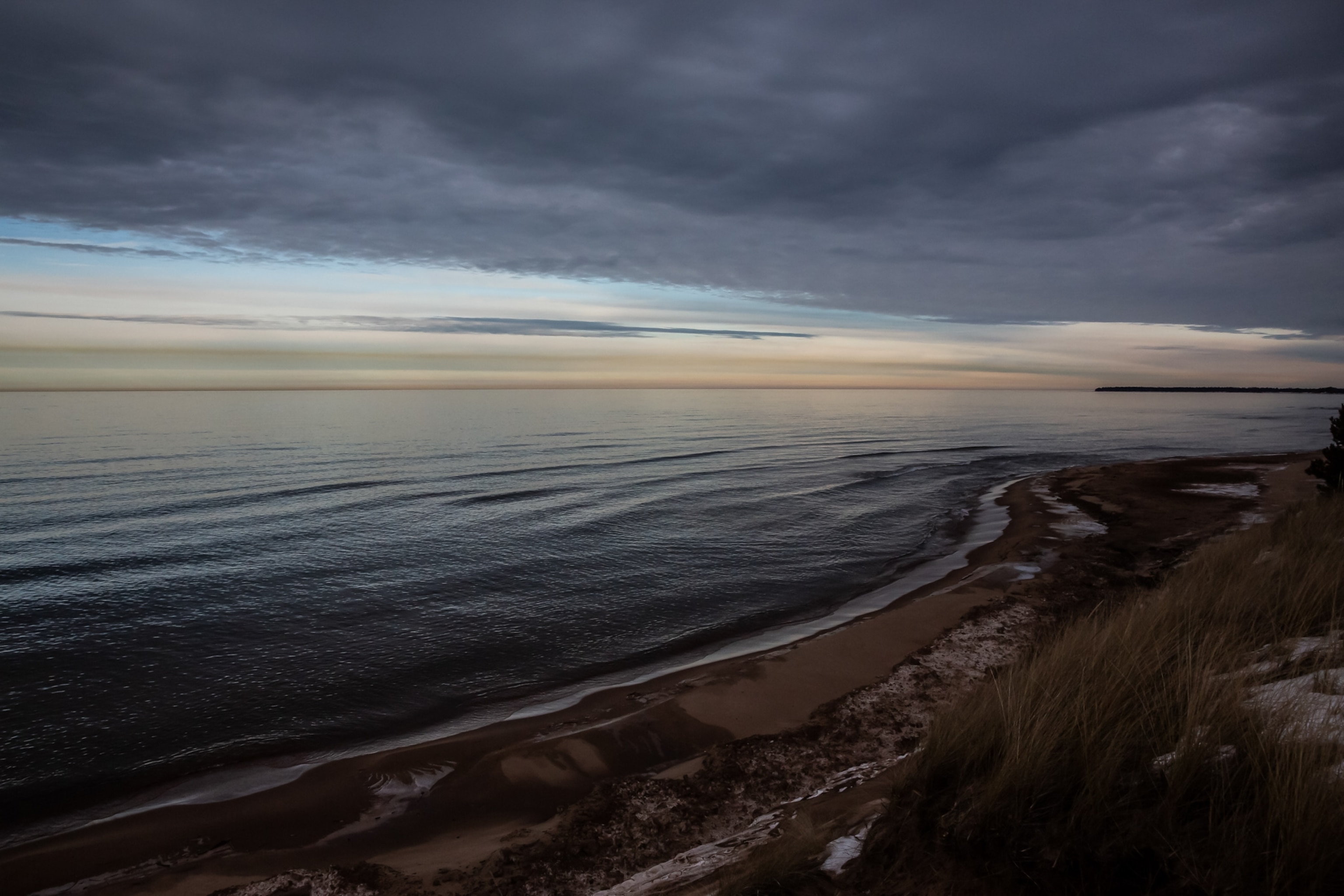
The planet has warmed by an average of nearly two degrees Fahrenheit (one degree Celsius) since the 1880s. The Great Lakes region is on a par with this global trend: Within the basin, air temperatures have risen by an average of 1.6 degrees Fahrenheit compared with the first 60 years of the 1900s. And much of that warming has been concentrated in the winter months, nudging the ice ever closer to its tipping point.
“Lake ice is an amazing indicator of climate,” says Sapna Sharma, a lake ecologist at York University in Toronto. It’s “a clear indication of climate change—and people have recorded it, in some cases, for centuries.”
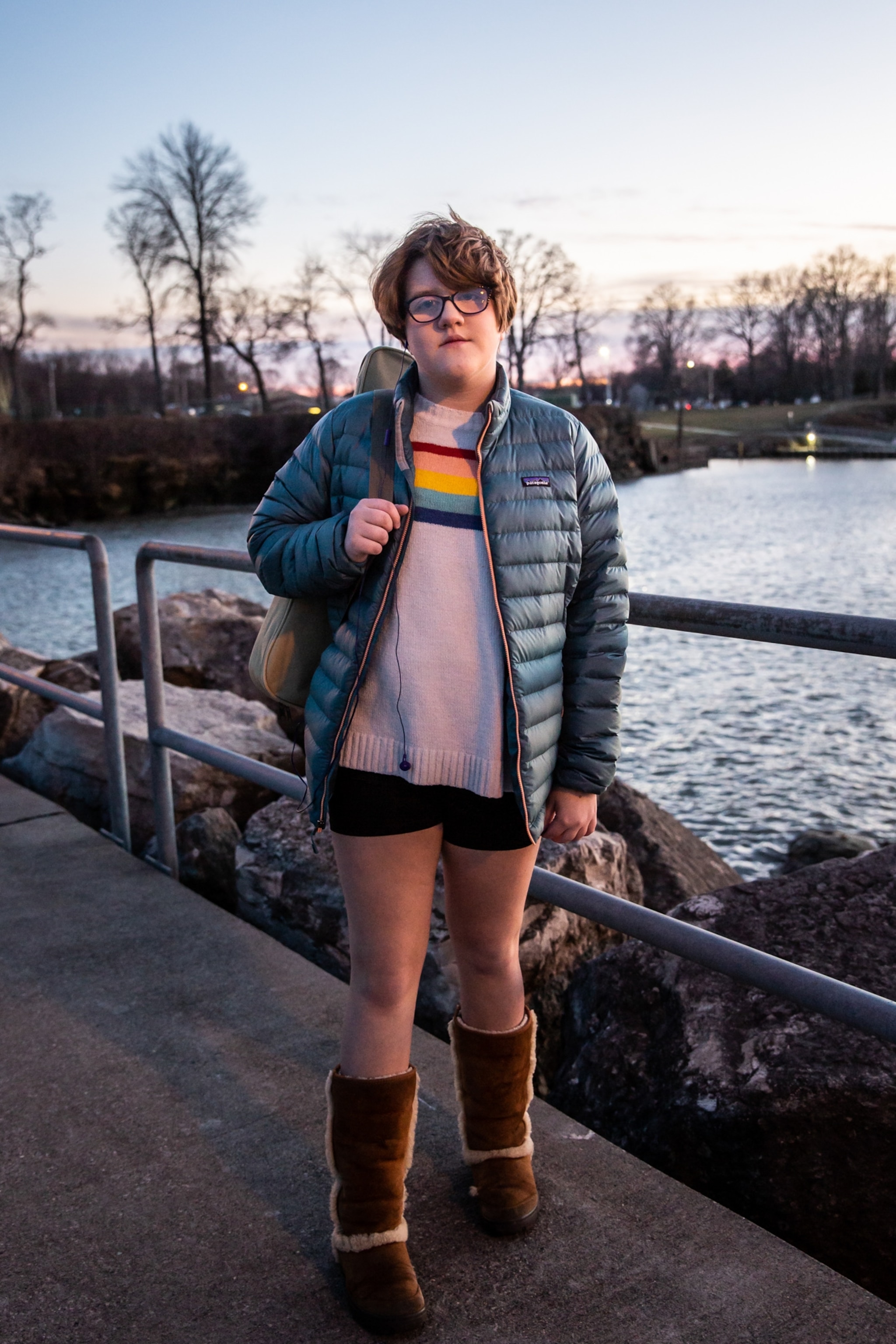
In Japan, priests at a Shinto temple have kept an almost 600-year record of when their lake freezes all the way across. Natural climate cycles emerge from that record—dwarfed in recent decades by the human-caused warming that has gripped the planet. Merchants who used Finland’s Tornio River for trade tracked the date the ice broke up each year from 1693 onward.
In Lake Superior, shipping companies have kept records of ice formation and breakup since 1857. The records show cold years with long stretches of early ice, warm years with less. But overall they are a clear signal of human-caused warming since the industrial revolution.

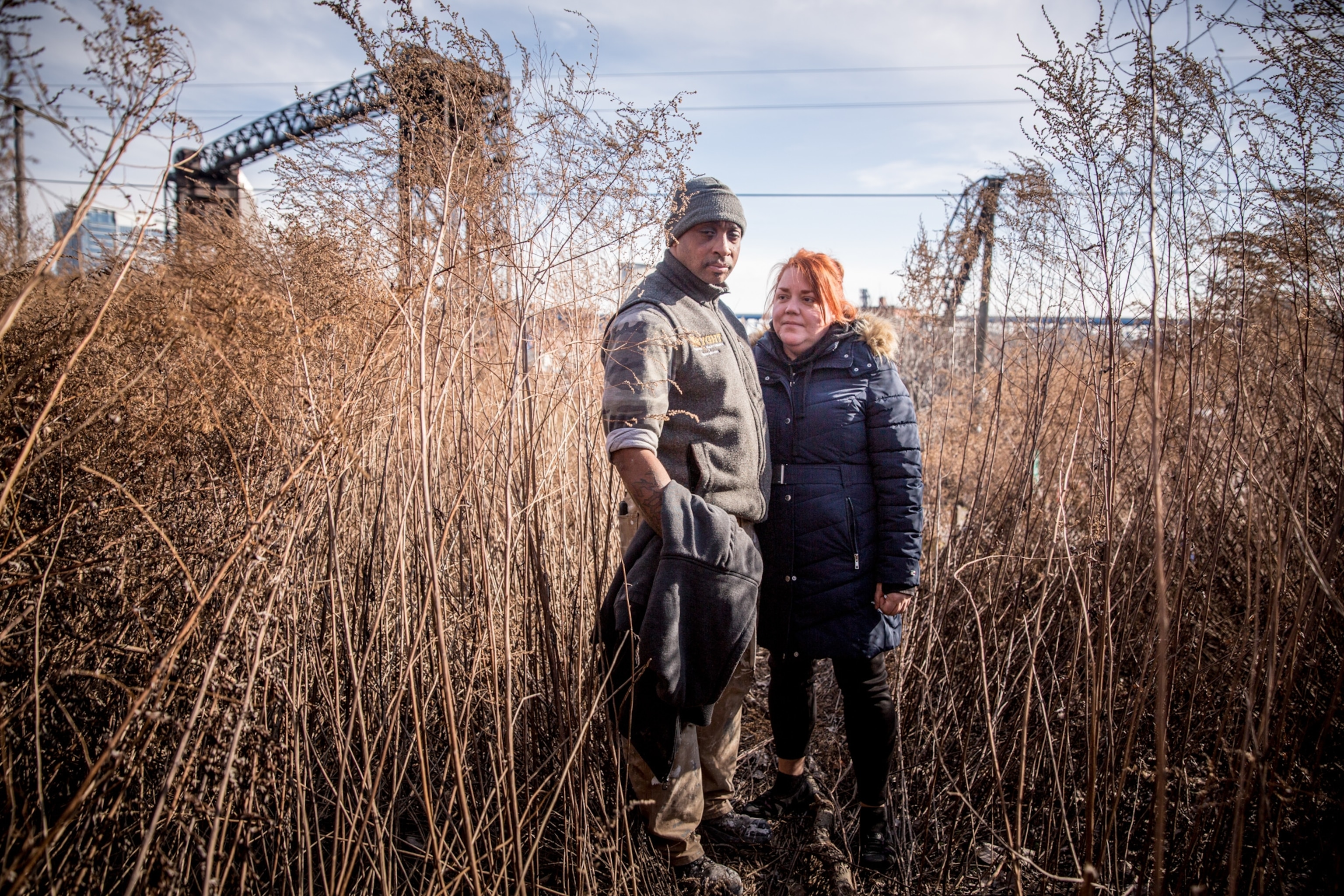
“What’s happening in the Great Lakes region is a small part of a bigger story,” says Lesley Knoll. A lake expert at the University of Minnesota’s Itasca Biological Station, she studies people’s cultural relationships with frozen lakes.
A threat to idyllic winter rituals
For Leavitt, 38, the ice has always been a place to bring her life into focus.
When her family would drive from downstate Michigan to visit her grandparents, who owned the lakeside camp at the time, Leavitt would layer on warm clothes, collect a cooler of minnows from the bait shop, and walk out onto the ice as far as she could. She’d crank her hand-powered auger, cut a channel through the thick ice, and open a portal to the quiet underwater world.

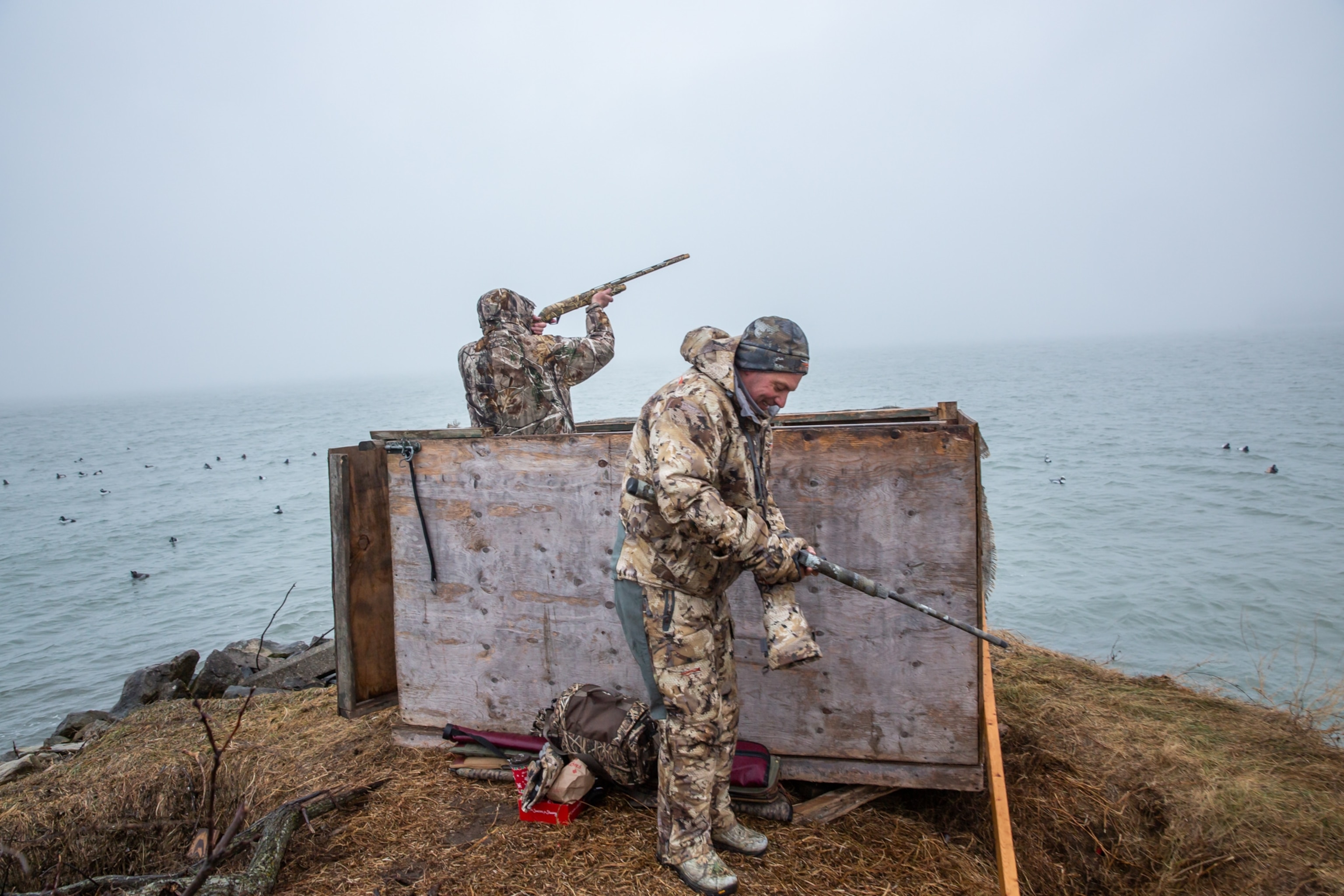
The old-timer at the bait shop had handed her a rod—a scant three feet long, designed for ice fishing—off the wall the first time she’d gone in there. He showed her how to tie a lure, and how to tip the rod up and down to make the lure and minnow glitter in the water’s depths. That first rod hangs on the wall of her shanty to this day.
Back then, when she was just a kid, it was a simple affair. She’d bring what little equipment she had out to the ice, perch on an overturned five-gallon bucket, and sit there for hours, tipping the nose of the rod up and down like a conductor’s baton, calling to the symphony of fish below. She didn’t catch much. But the feel of it—the clouds skidding overhead, the water changing colors below her feet, the wind swishing past—got locked into her brain as the essence of winter.
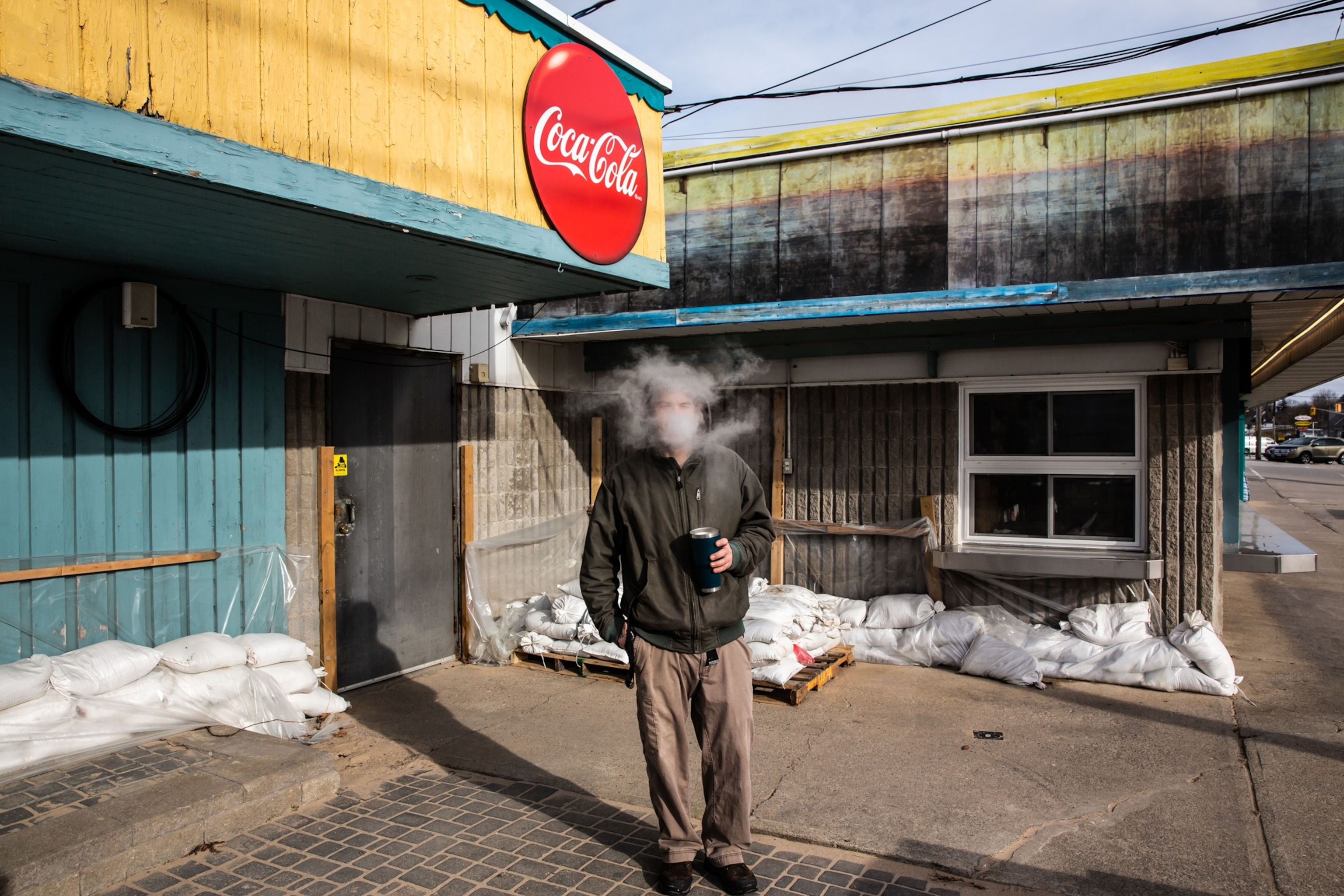
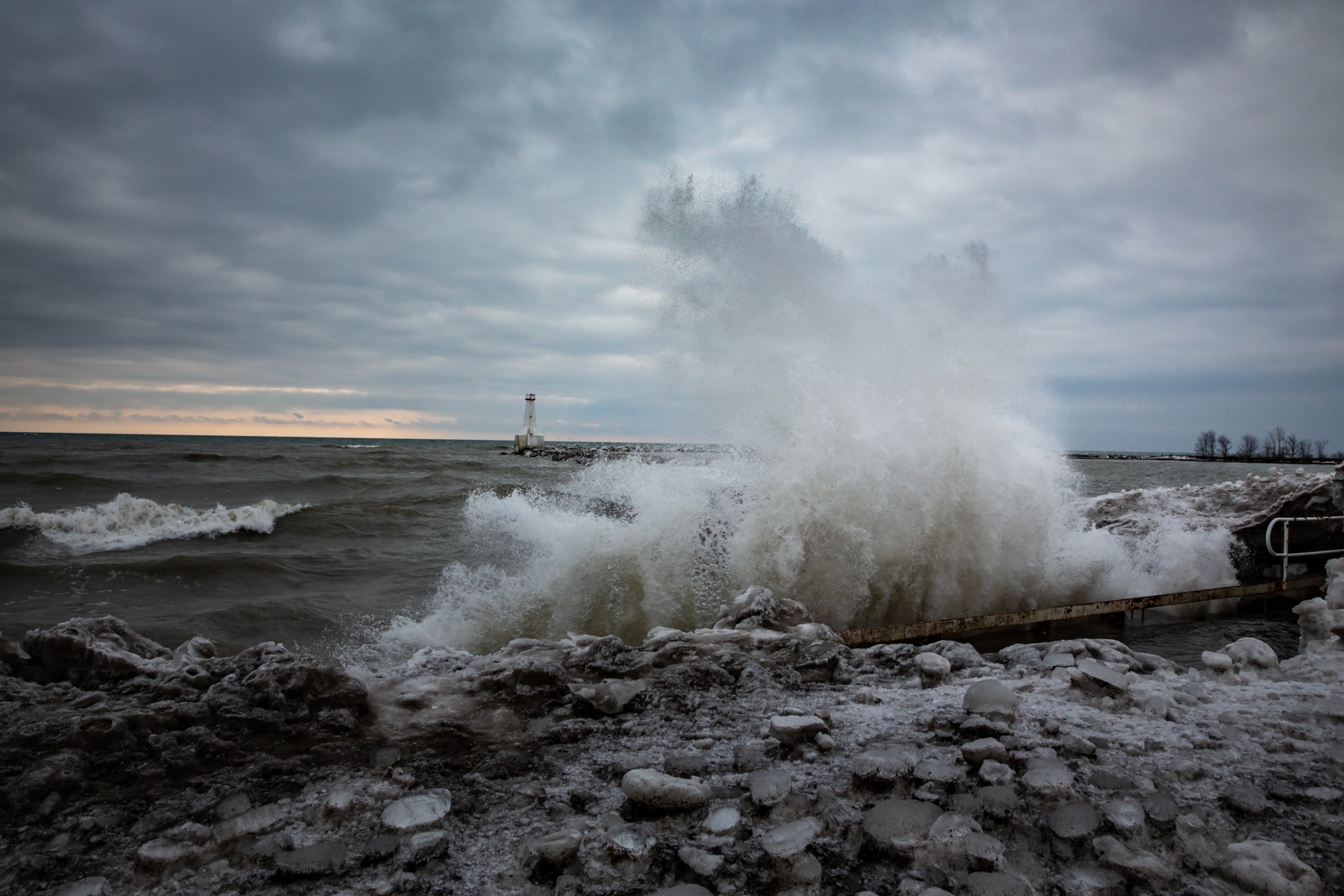
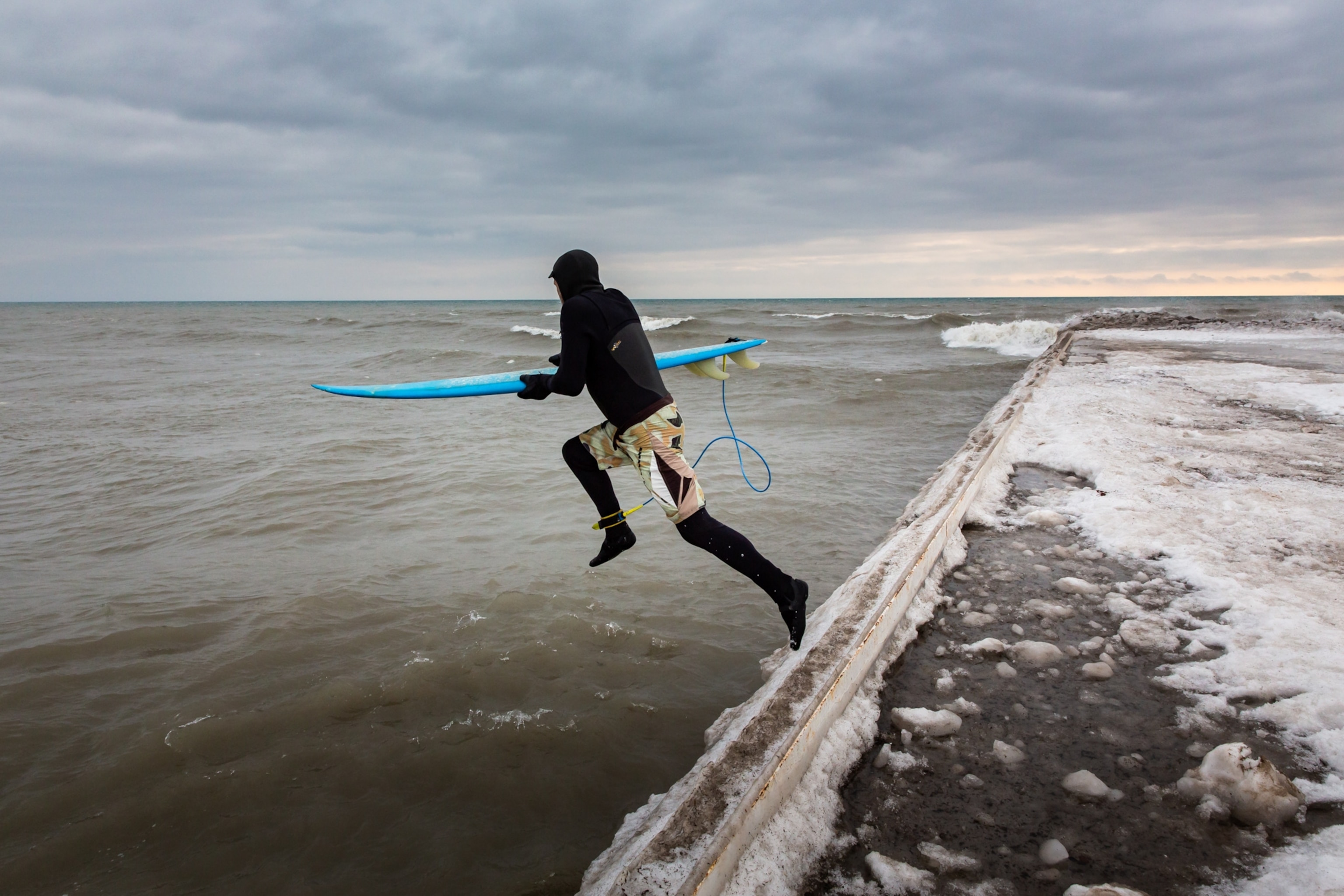
Leavitt isn’t alone. Ice provides crucial things to everyone who goes out on it. Respite for some, dearly held recreation for others, food, and much more. Snow and ice also are critical components of local U.S. economies across the region: Winter skiing and snowmobiling account for some $3.5 billion, a recent estimate said. A single ice fishing tournament can inject hundreds of thousands of dollars into communities.
But in parts of Lake Superior, the ice season has been shrinking by an average of almost a day each year for the past few decades. That means the year Leavitt was born, a winter on Superior would have included more than a month more ice cover than it does today. Superior also is warming faster than every other large lake on Earth, except Lake Fräcksjön in Sweden.

(See photos of the vibrant surf scene on the Great Lakes.)
The other Great Lakes’ ice seasons are shrinking as well, by an average of about half a day per year. That may sound small and benign, but it masks much more critical change in a place where the line between ice and no ice, snow and rain, can be razor thin.
It’s difficult to see the change clearly, in some cases, because there’s huge year-to-year variation, says Jia Wang, a climatologist at NOAA who focuses on ice cover in the Great Lakes region. Though they’re hundreds of miles from the oceans, the lakes feel weather influences from both the Pacific and the Atlantic, and incorporate those weather patterns into their own.
So, although one year may be warmer than the one before, some recent winters were icy cold. In 2013-14, the polar vortex carried frigid air from the Arctic into the continental U.S., and the cold stretched well south of the Great Lakes. Total ice cover on the Great Lakes spanned more than 90 percent, growing so thick in some places that the augers ice anglers used couldn’t reach the water.
The extra-tricky part is that the presence and growth of lake ice each winter create a complicated sequence of events.
Maybe it gets cold enough for ice to form early in the winter—but if a stretch of bitter wind keeps the water’s surface churning, ice will form later. Maybe the summer before was extra warm, zapping enough extra heat into the water that it takes it extra long to cool off and get to the point when it can start to freeze. Maybe a bunch of snow falls early in the season, insulating the ice from the top and, counterintuitively, keeping it from growing quickly through the cold temperatures.

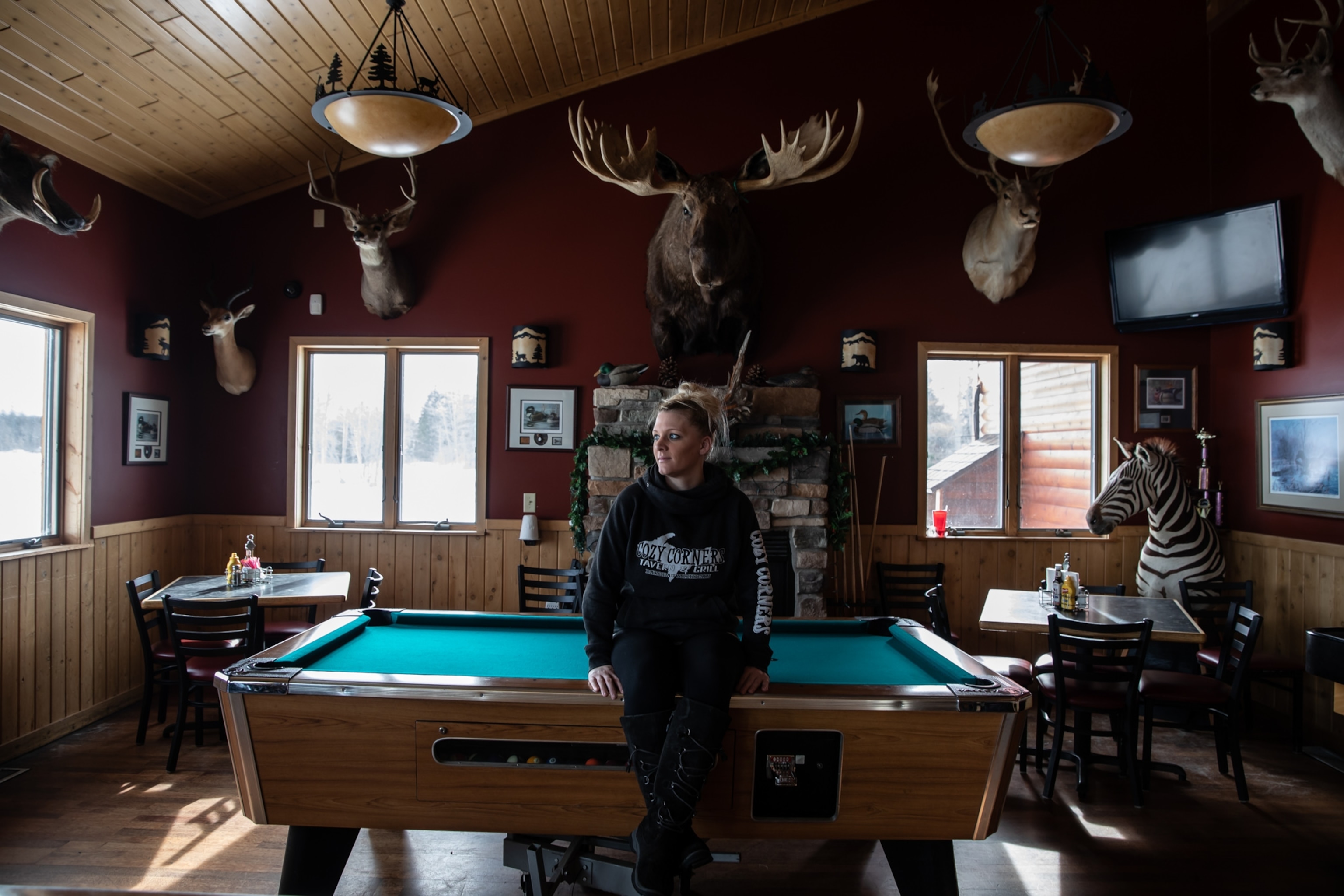
Some factors aren’t so complicated. The air is getting warmer. So is the water, in many places faster than the air. In the Northern Hemisphere, nearly 15,000 lakes that used to freeze consistently now ice over intermittently, if at all.
‘It feels like something’s wrong’
Winter is integral to the culture of the Great Lakes region. Warm mid-February days draw Michiganders outside, but they’re uneasy.
“We like it when it’s nice like this, but it’s not real winter unless it’s, like, minus 40,” says Kasey Spencer, a lifelong Upper Peninsula resident. “When it’s cold, we’re miserable—but we’re also really happy, you know? If we have a really warm winter, it feels like something’s wrong.”
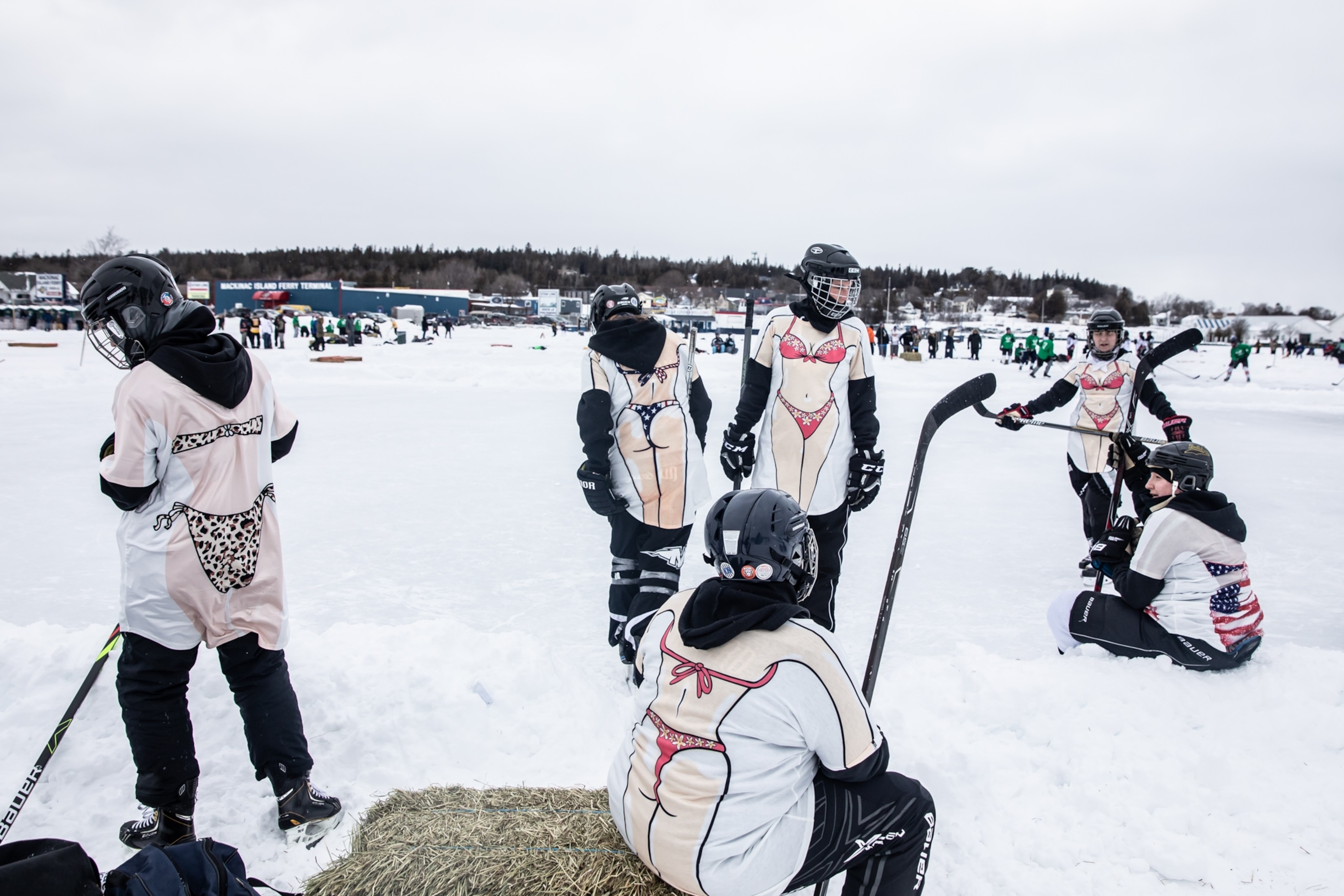
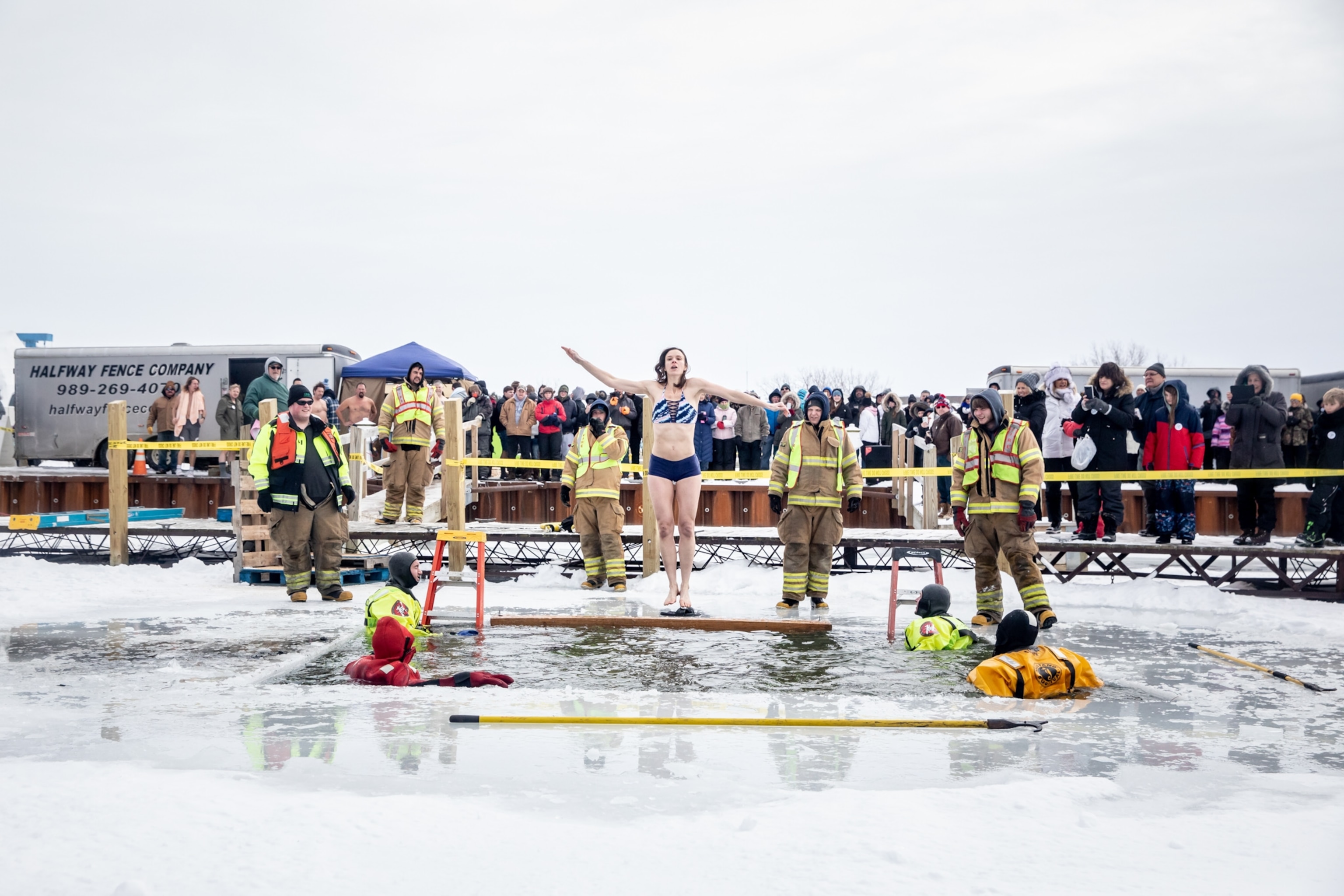
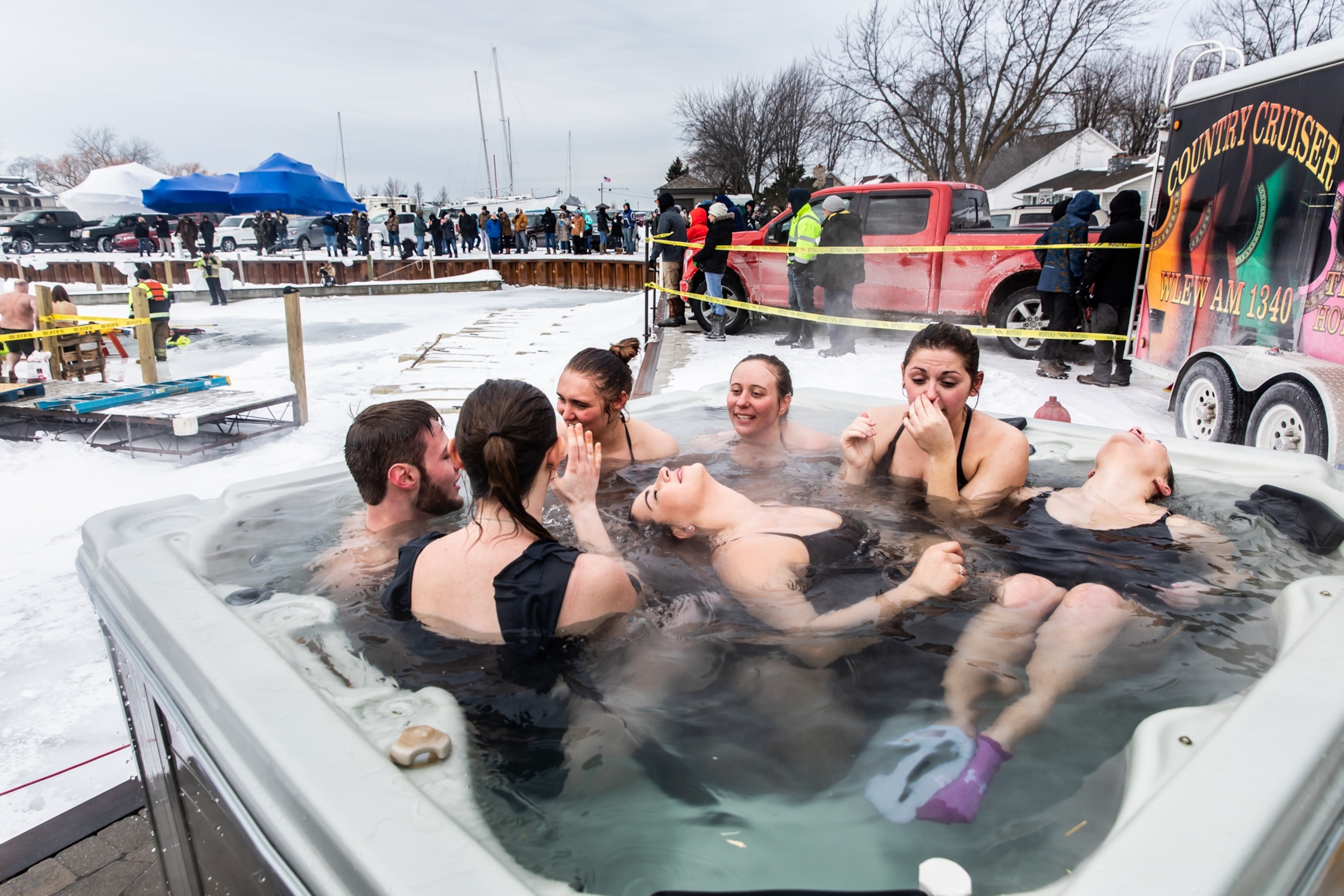
What the future holds is both more and less. There’s more heat in the air, trapped by the greenhouse gases humans continue to pump into the atmosphere. Climate experts forecast air temperatures in the Great Lakes basin to rise by another degree or so by 2045, and roughly six to 10 degrees by 2100. There’s also more heat in the water, forced in during long, hot summers.
However, some scientists predict that by the end of the 2030s, there will be 15 to 16 fewer days with the minimum temperature below freezing in the Great Lakes basin, and by the 2050s a few more. By the end of the century, depending on the strength and aggressiveness of climate actions taken, 27 to 42 fewer days each year could be below freezing, scientists say.
In the 2015 Paris climate accord, 195 signatories agreed to try to limit planetary warming from surpassing 3.6 degrees Fahrenheit (two degrees Celsius) beyond preindustrial levels. Sharma estimates that even if those goals are met, more than 35,000 Northern Hemisphere lakes could lose their consistent winter ice. Under the most dire warming scenarios, more than 200,000 lakes could have more ice-free years.

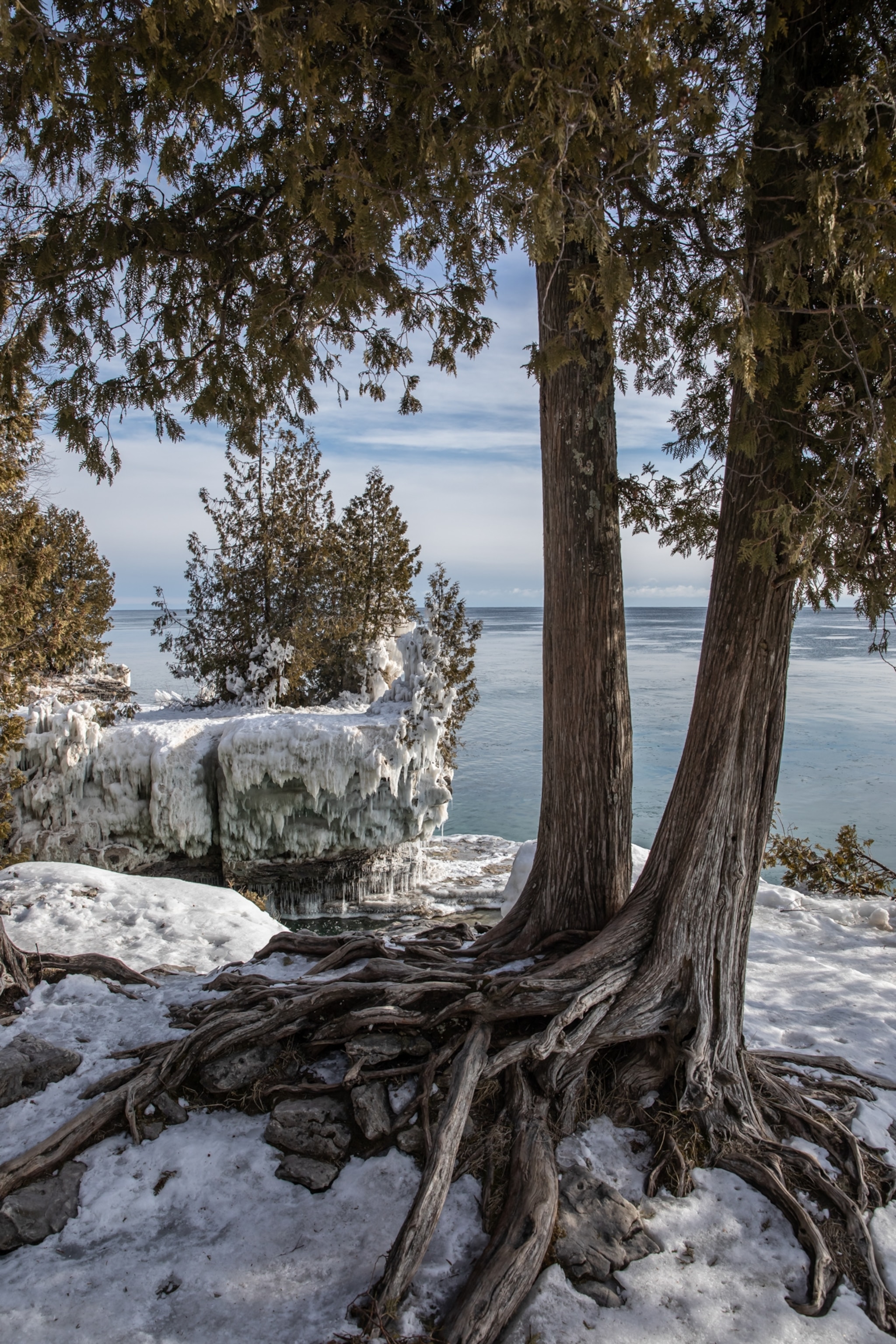
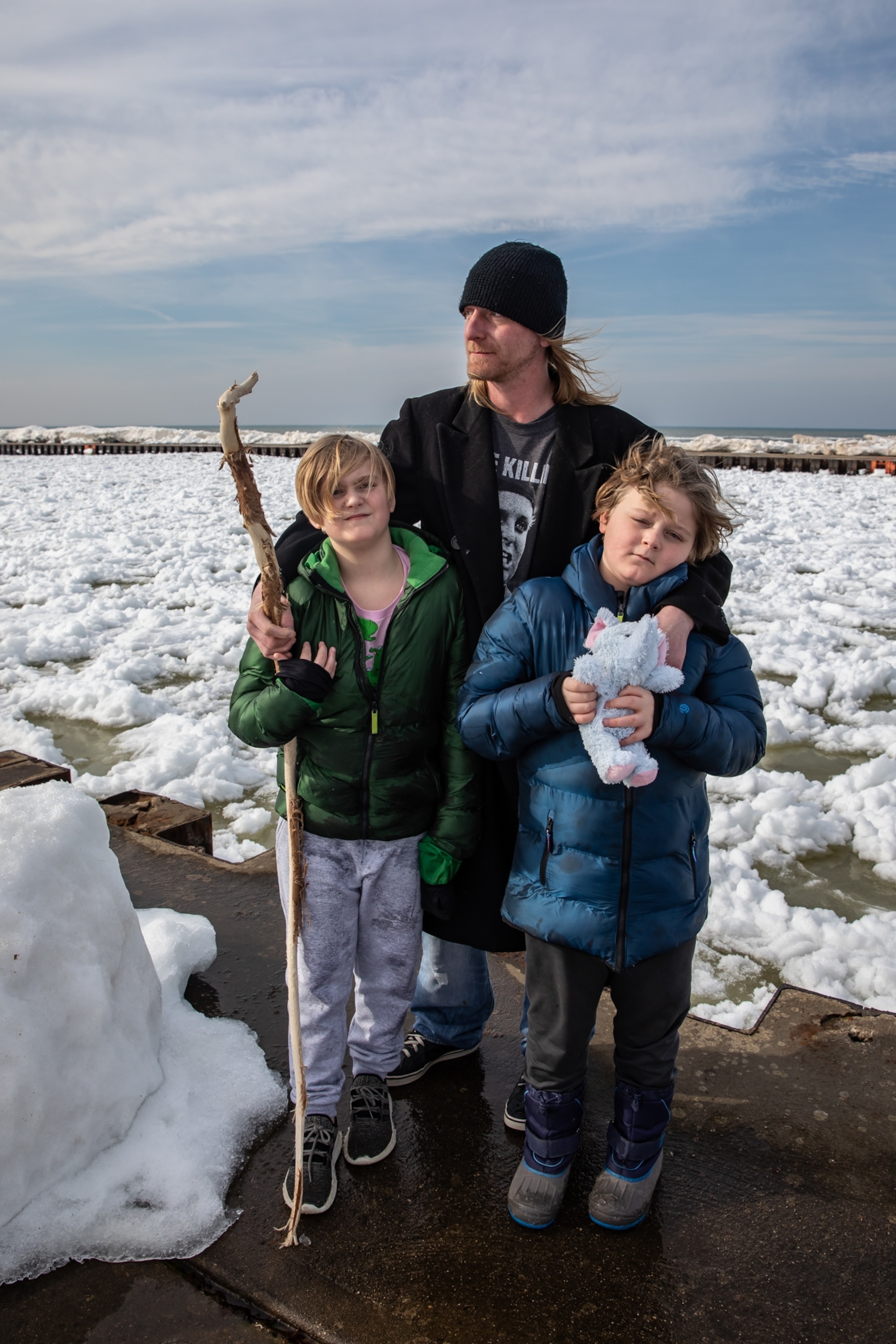
“Things like ice and water have a long memory,” says Richard Rood, of the University of Michigan, who studies the ways climate change is playing out across the Great Lakes region. “What we’re seeing is some systematic increases in temperature over the long run, putting you closer to the freeze-thaw cycle of water. And you’re seeing winters getting warmer, shorter—so you just don’t have the amount of time you used to for thermodynamics to do their thing.”
If the water doesn’t cool down enough during the winter, it gets warmer, faster, in the spring and summer. Over time, and especially as the climate keeps up its inexorable warming, the system could wind itself up more and more—a self-reinforcing loop.
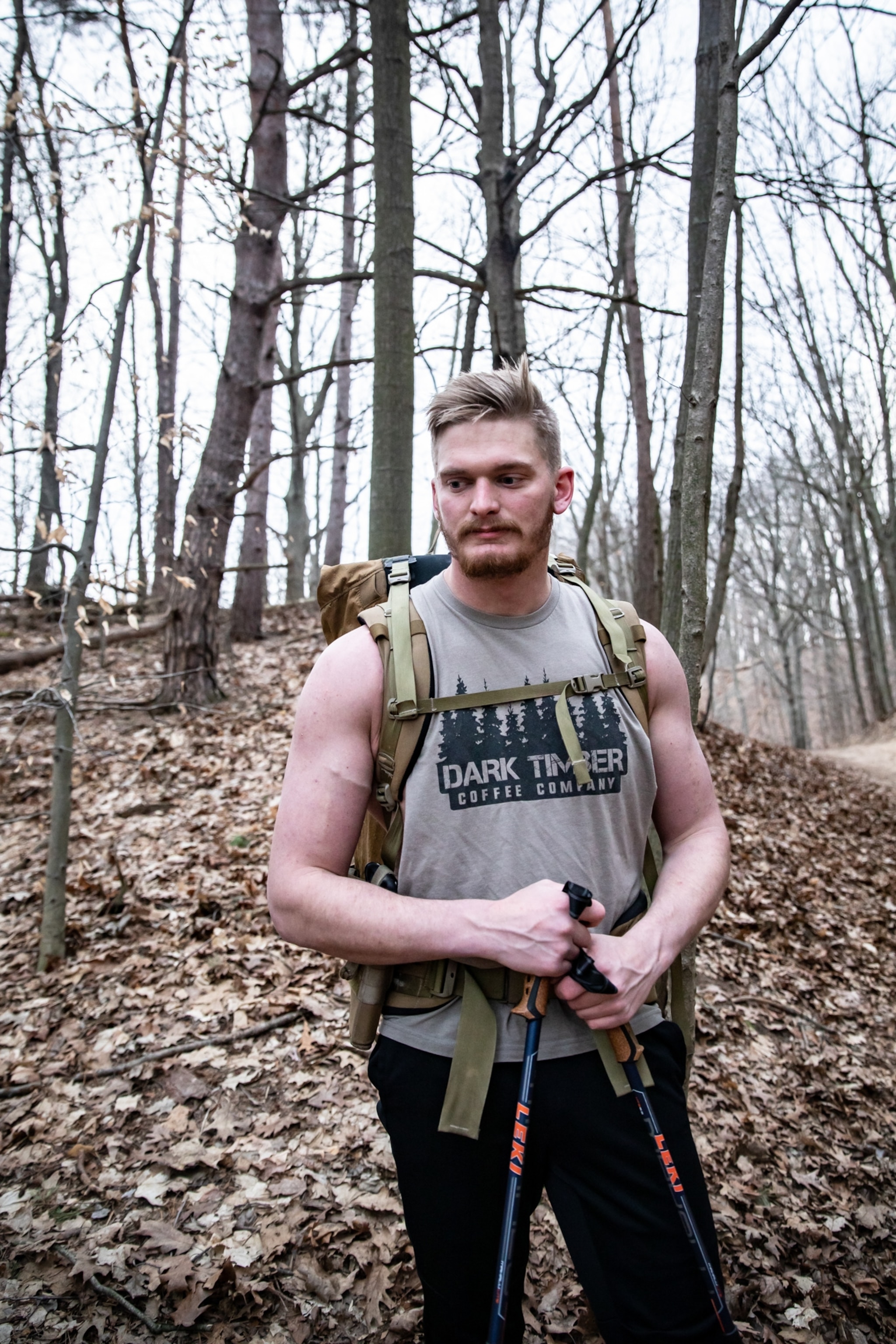
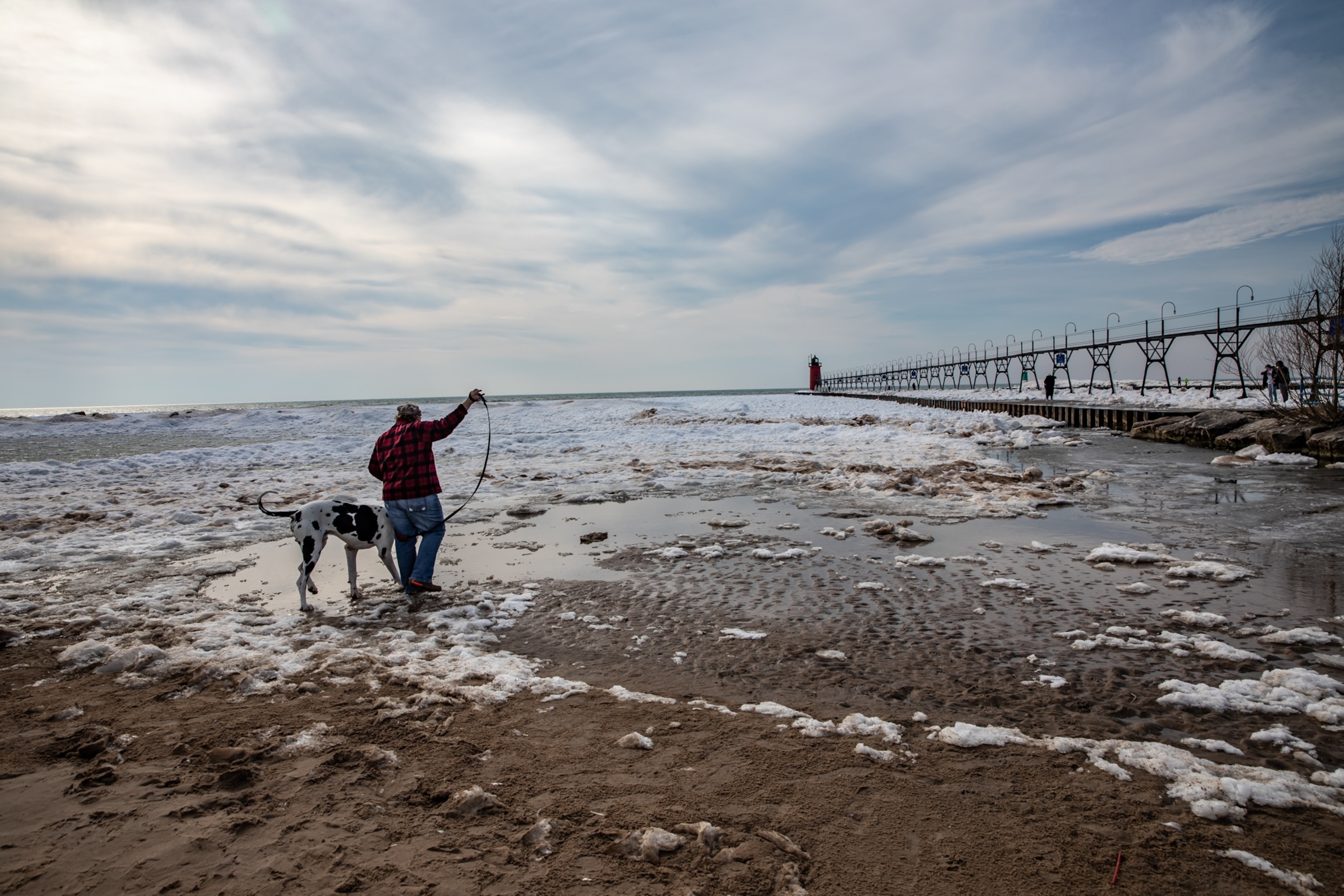
“At some point these areas that maybe sometimes get ice and sometimes don’t, they’re going to transition to never getting ice,” Knoll says. “How are people going to interact with those water bodies when they never get ice at all? How are they going to adjust? How are their lives going to change?”
Leavitt hesitates when she starts to talk about the future. The world as she sees it is still ice covered; each year is another opportunity for cold. But occasionally, the concerns bubble up. “Sometimes I just don’t know,” she says as she sets up to fish, strands of hair wisping around her intent face. “Will all this still be around when I’m 70?”
This story was updated on October 1, 2020.


